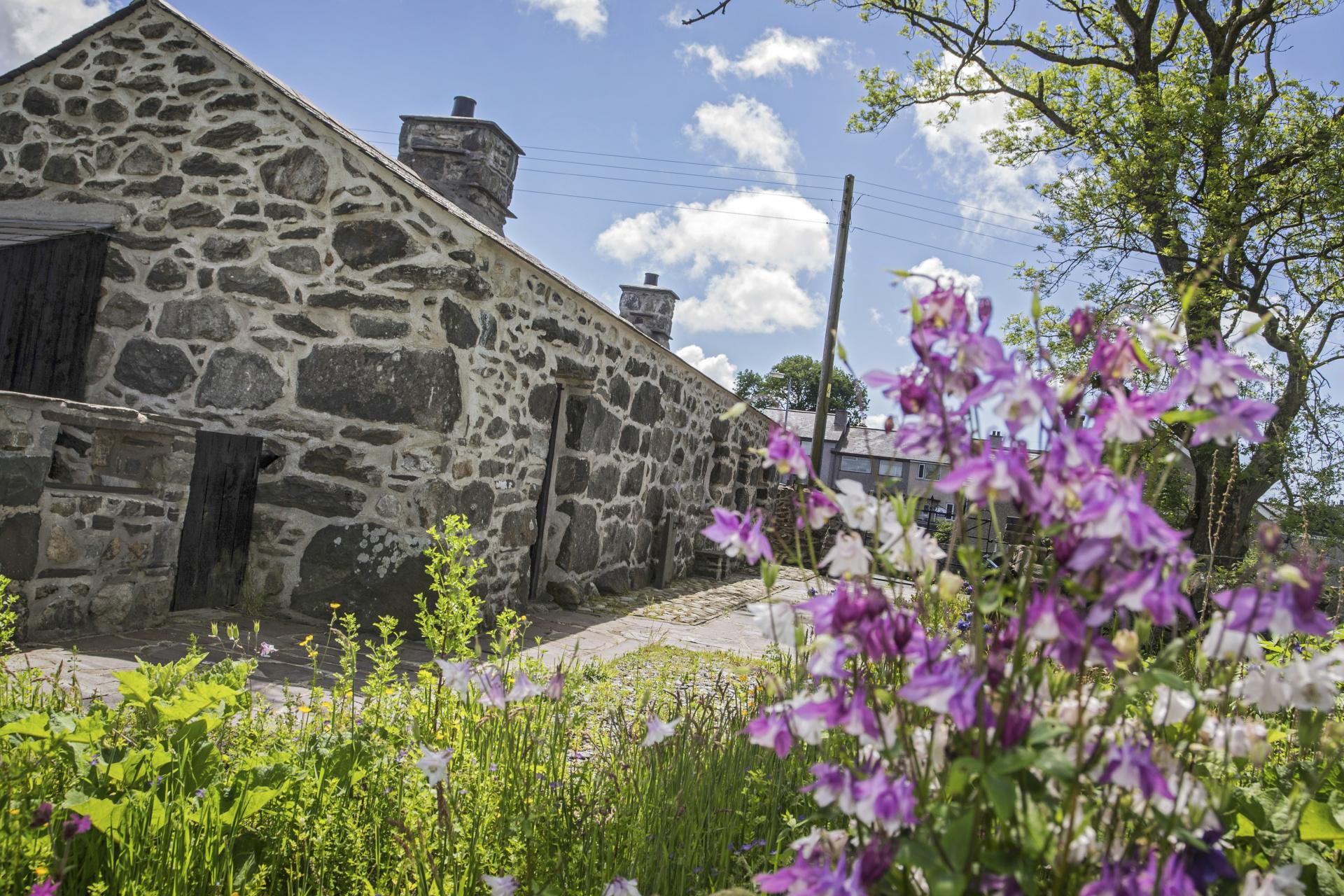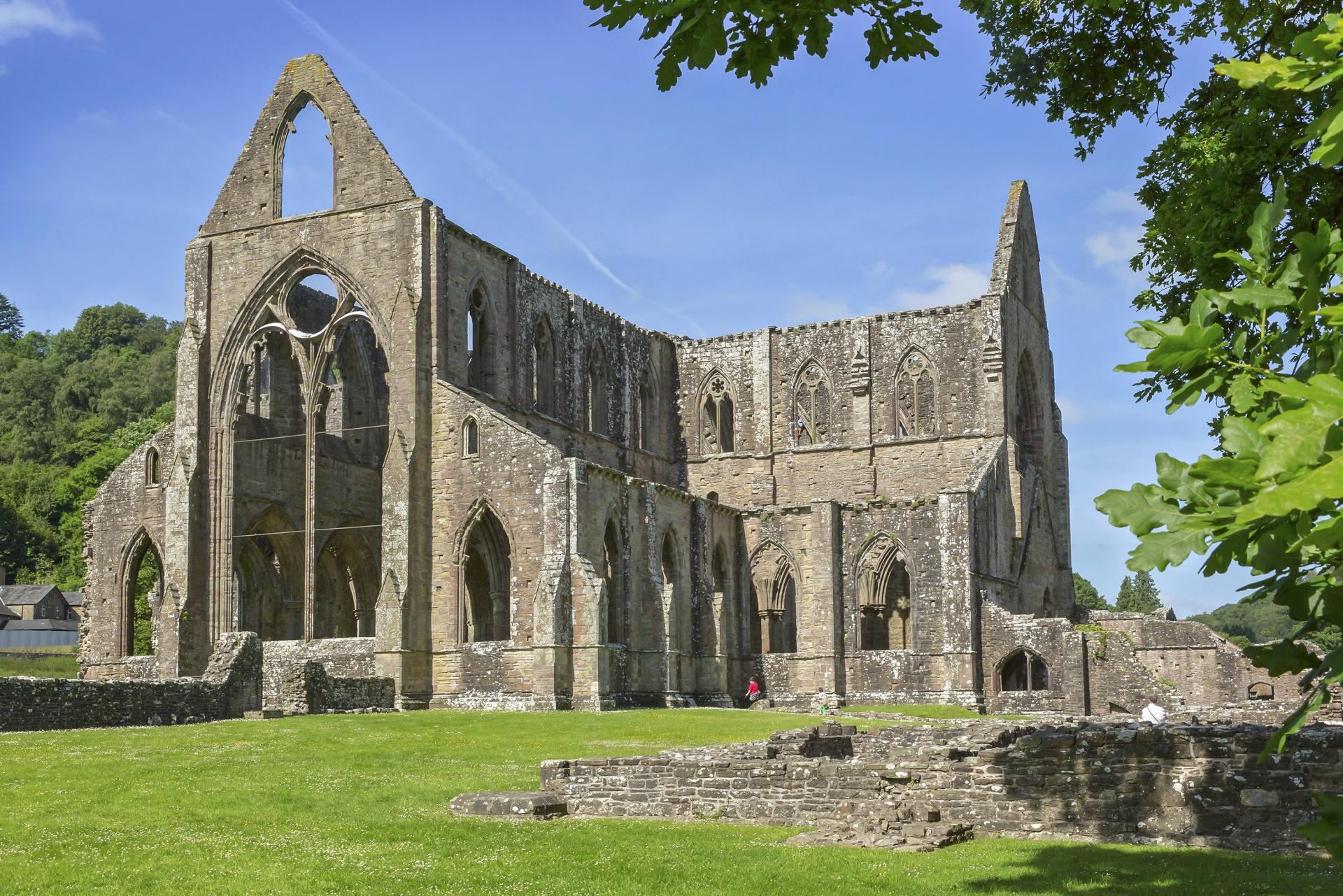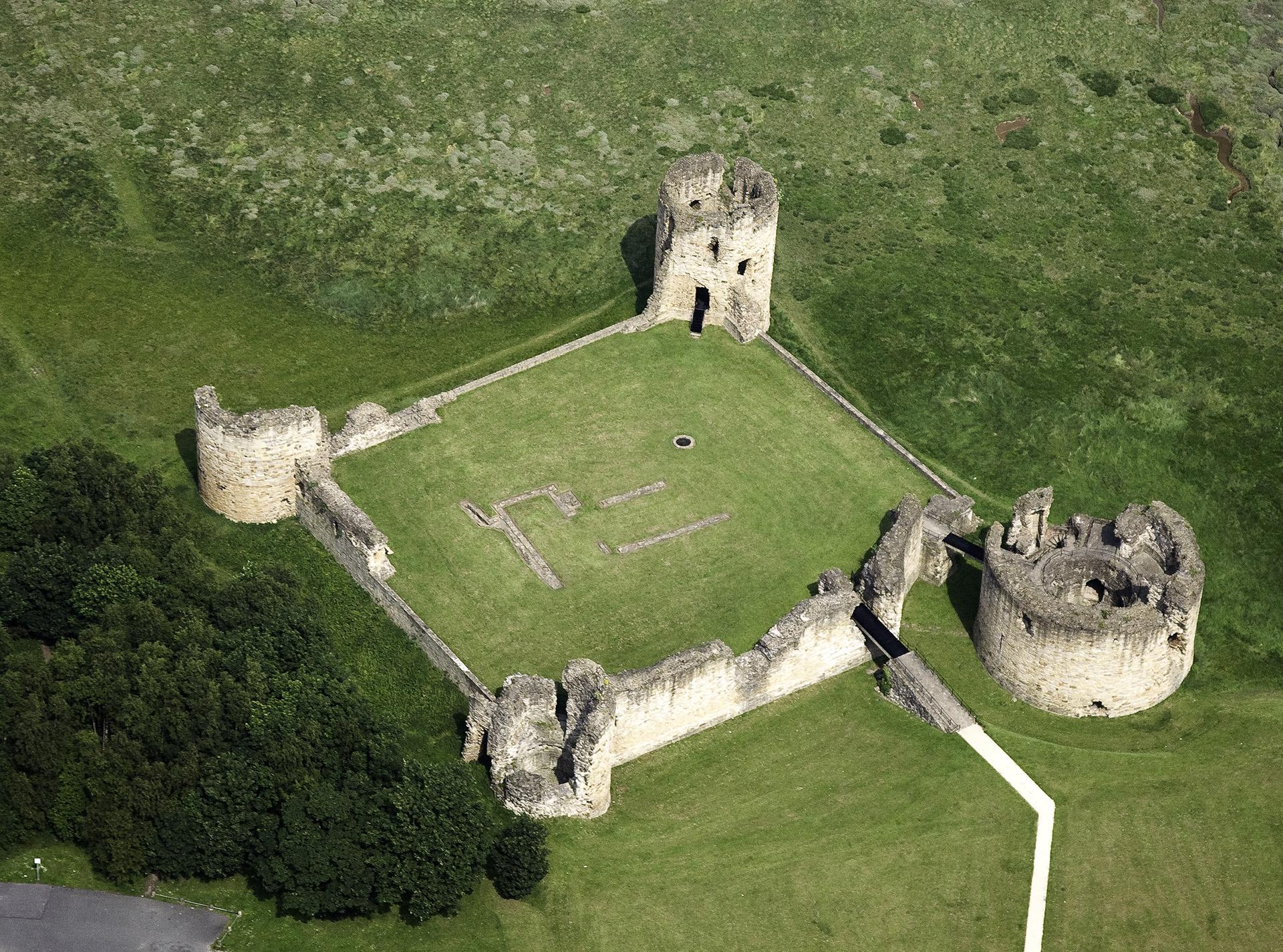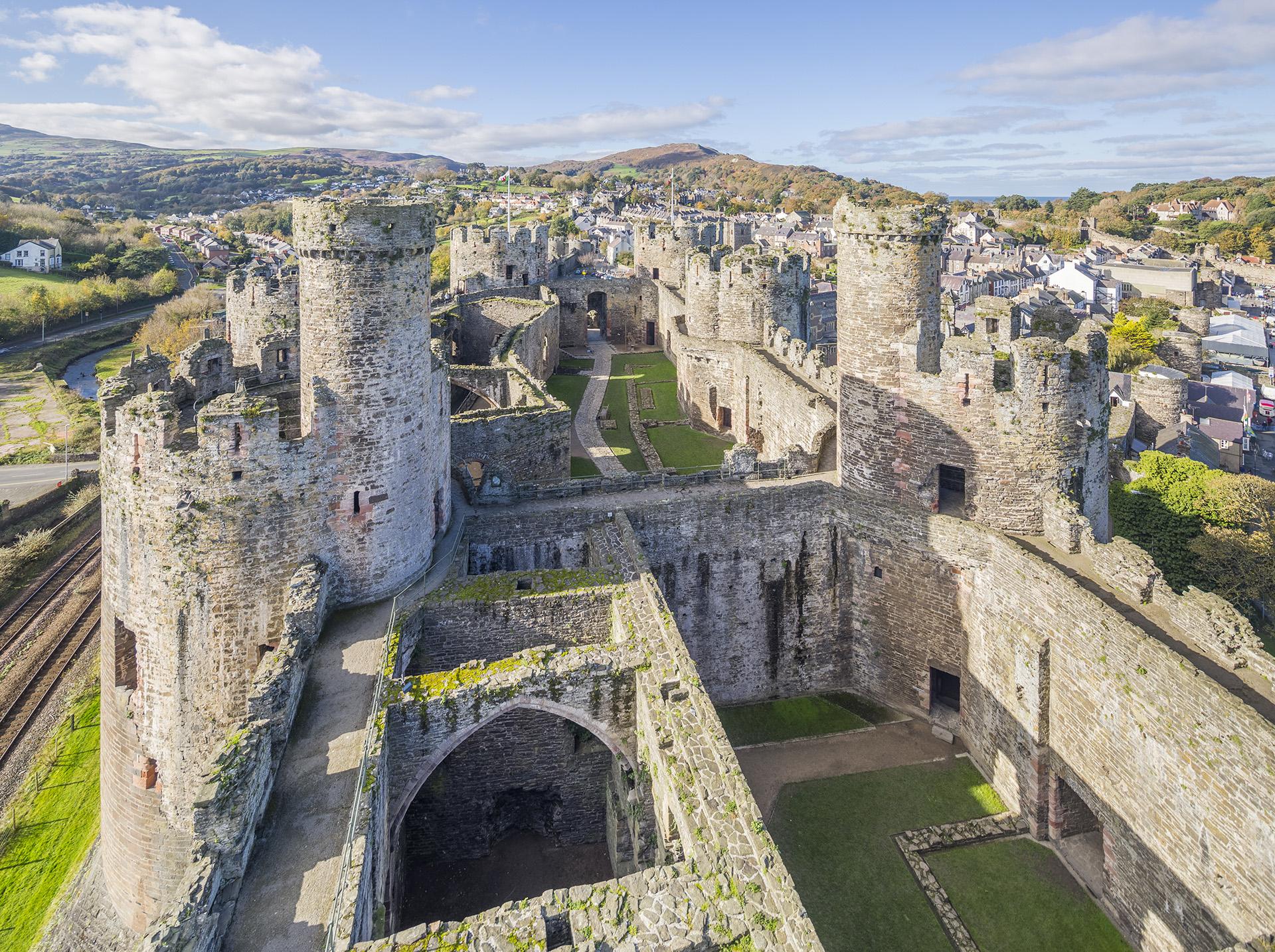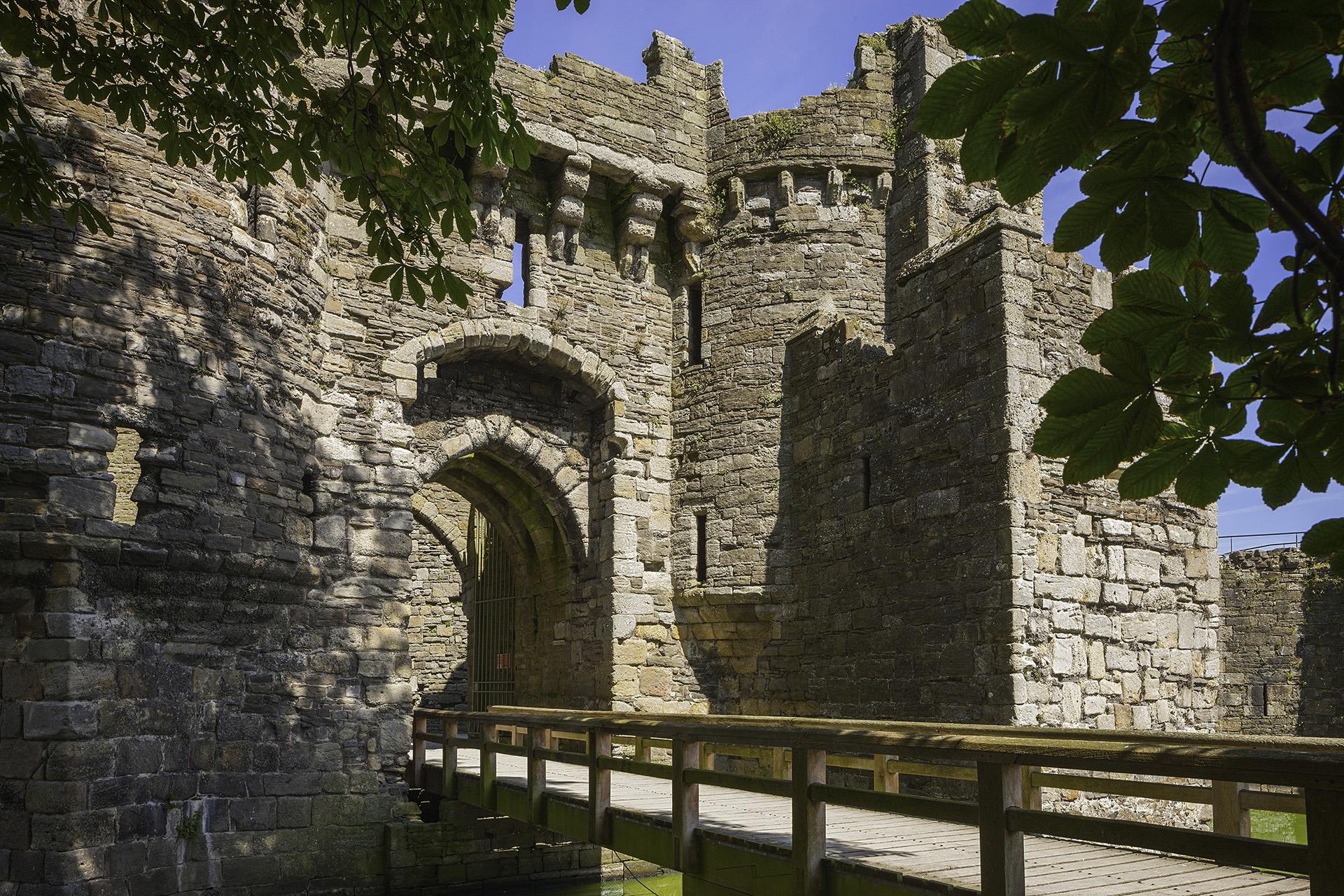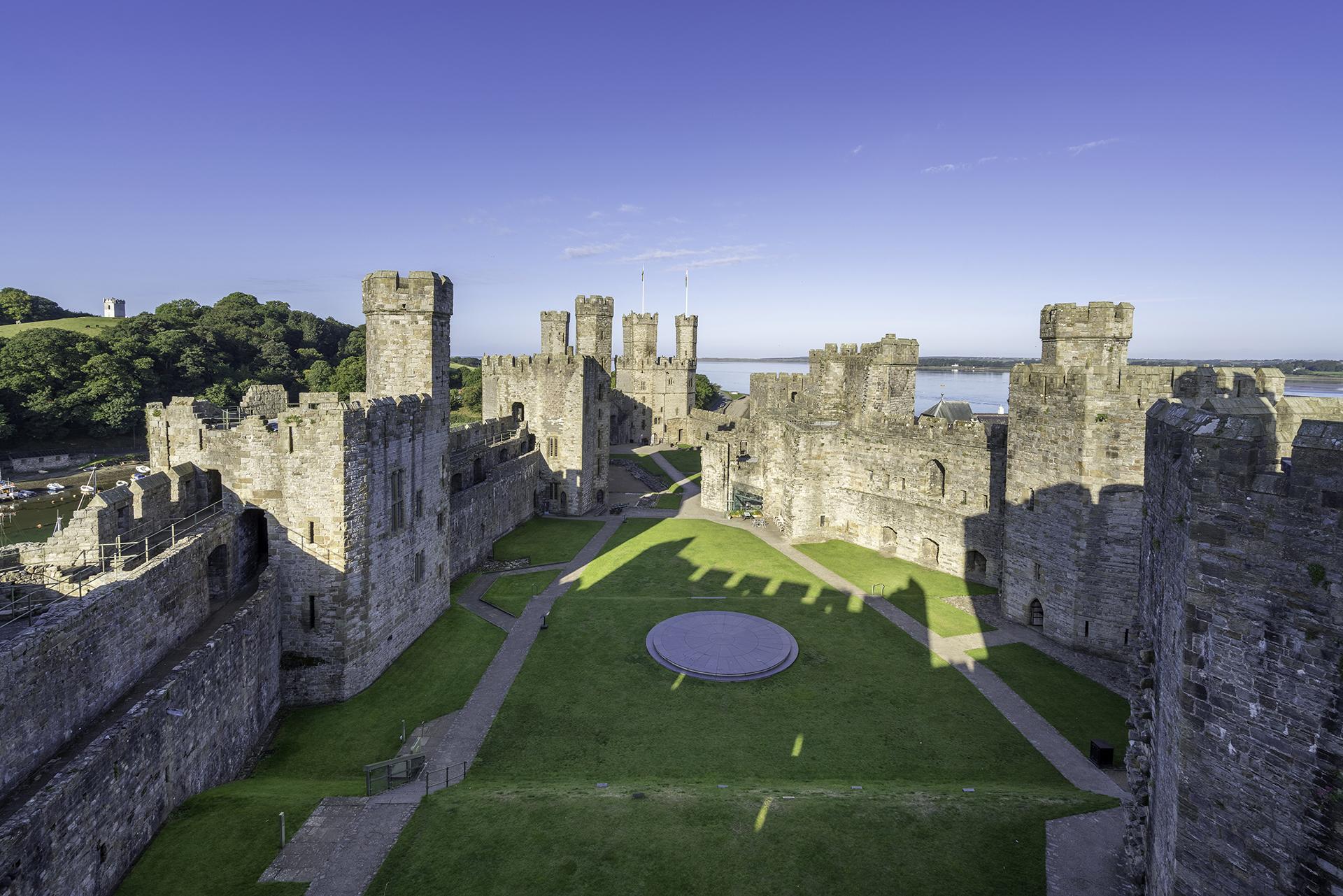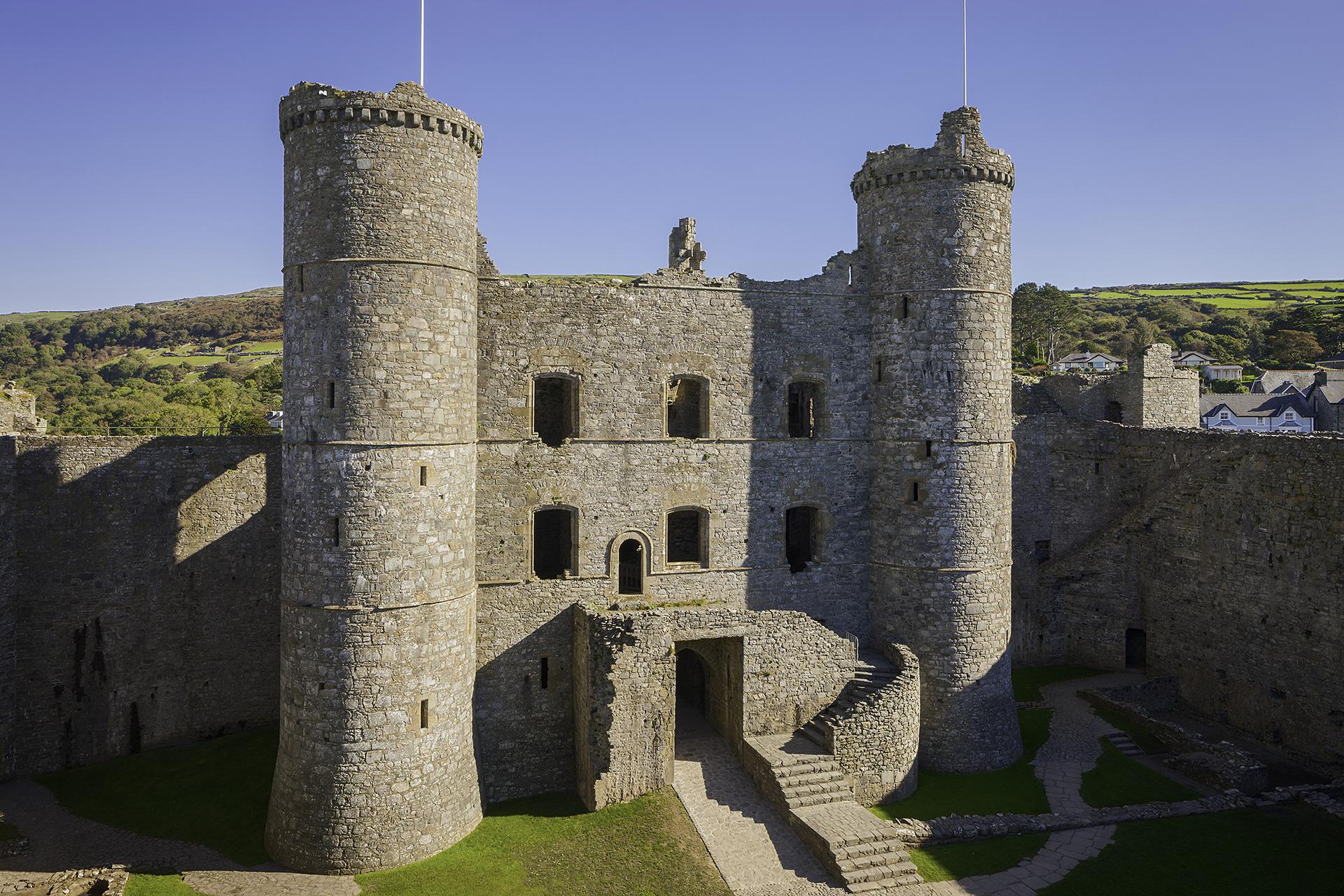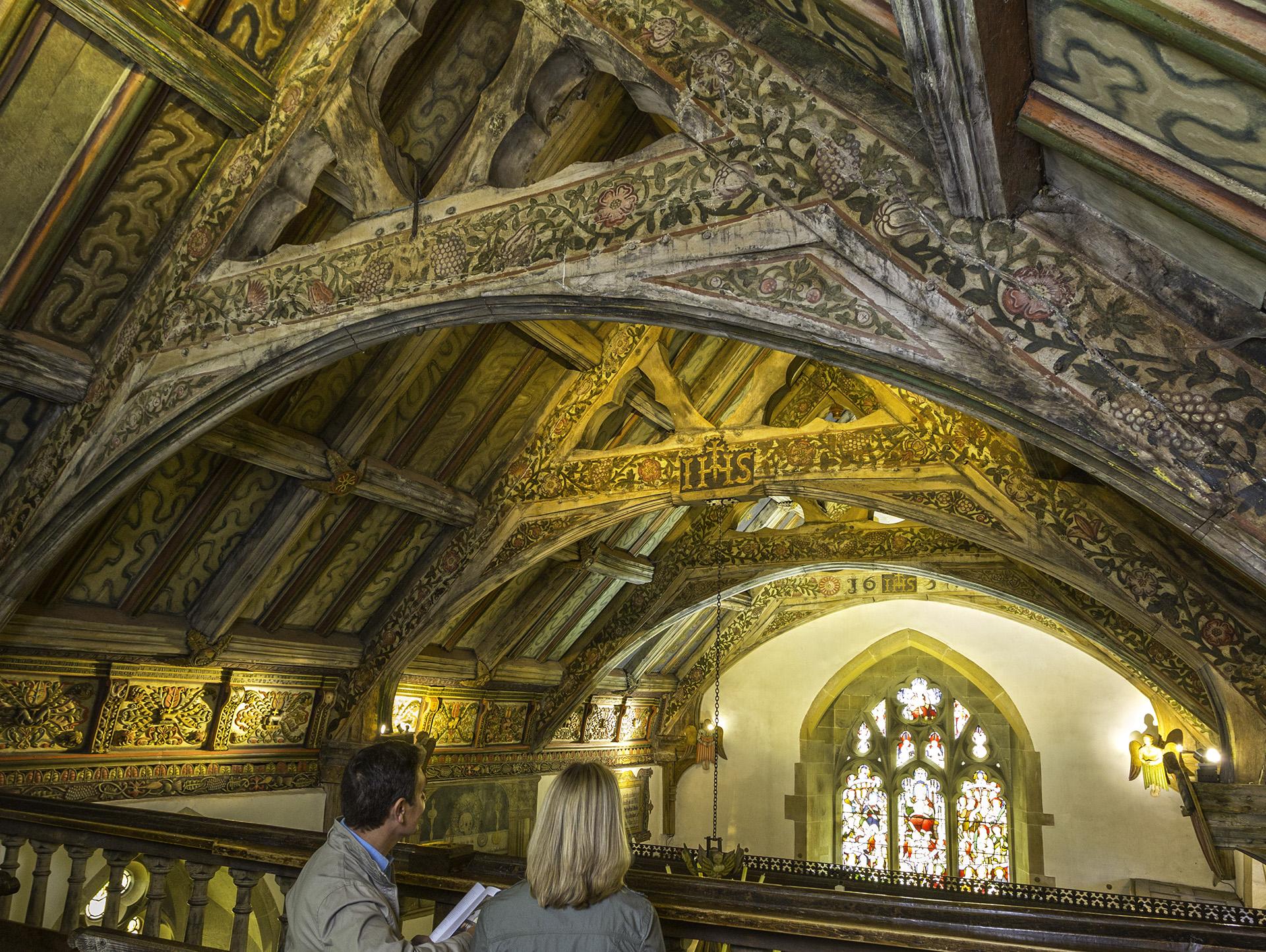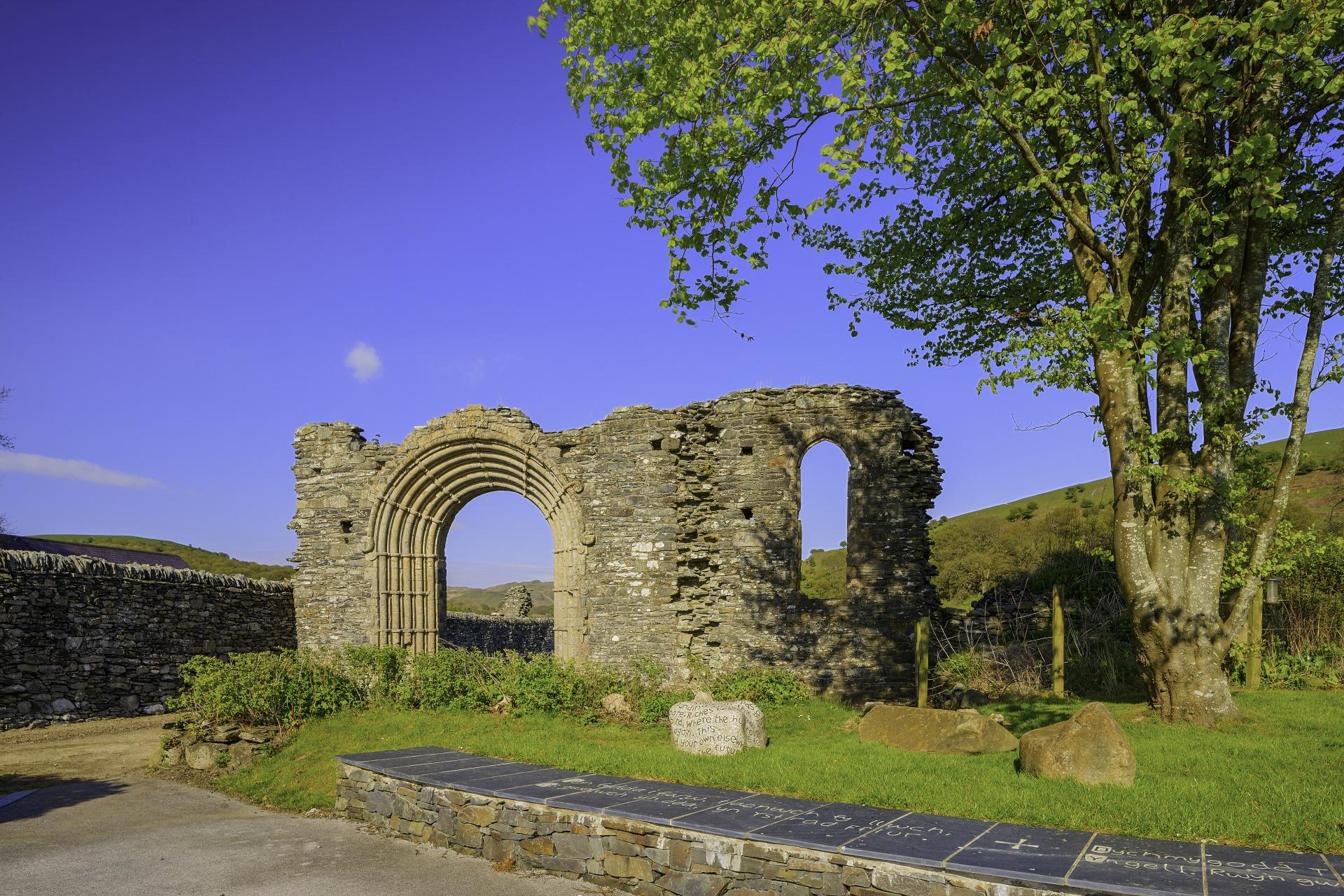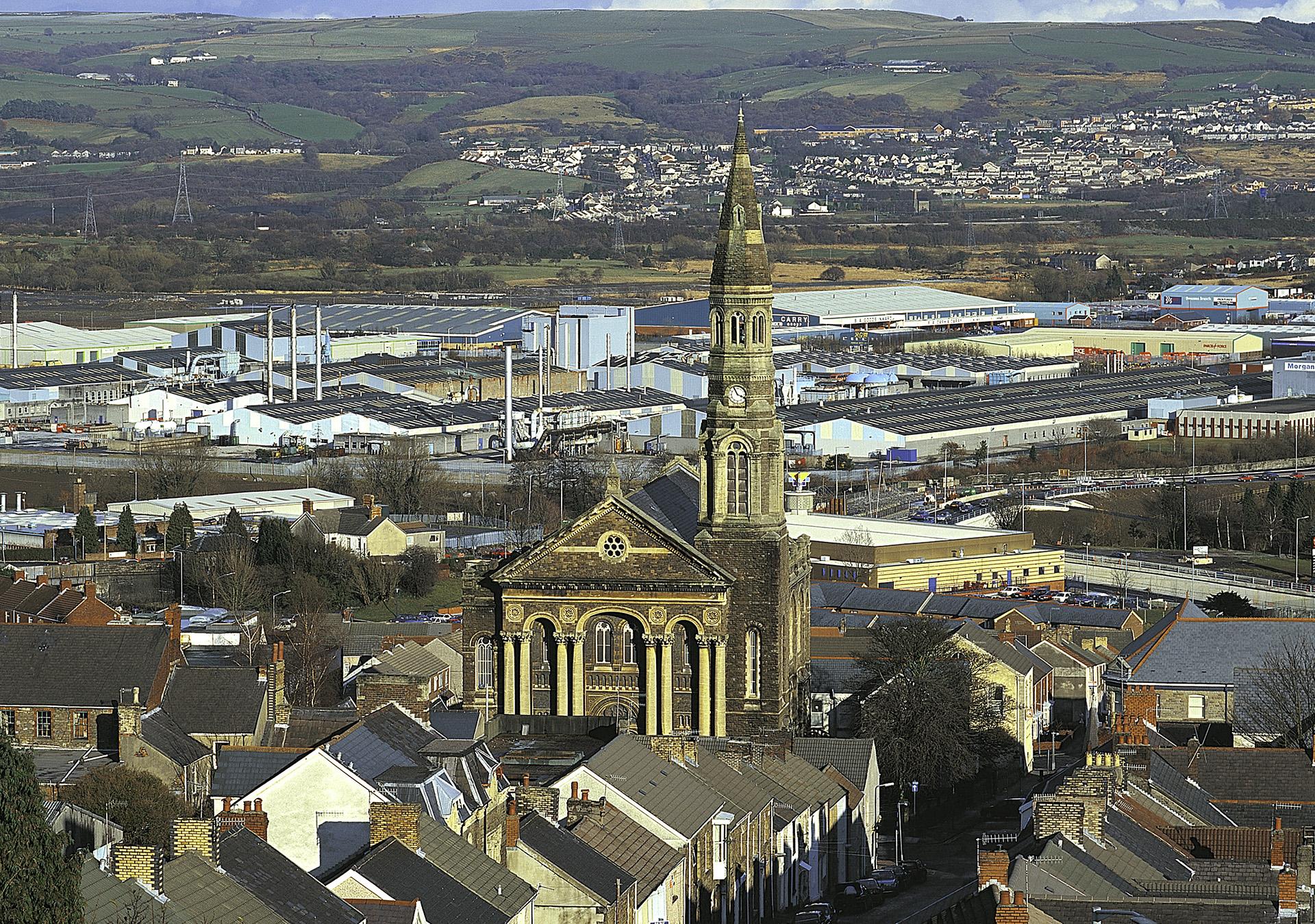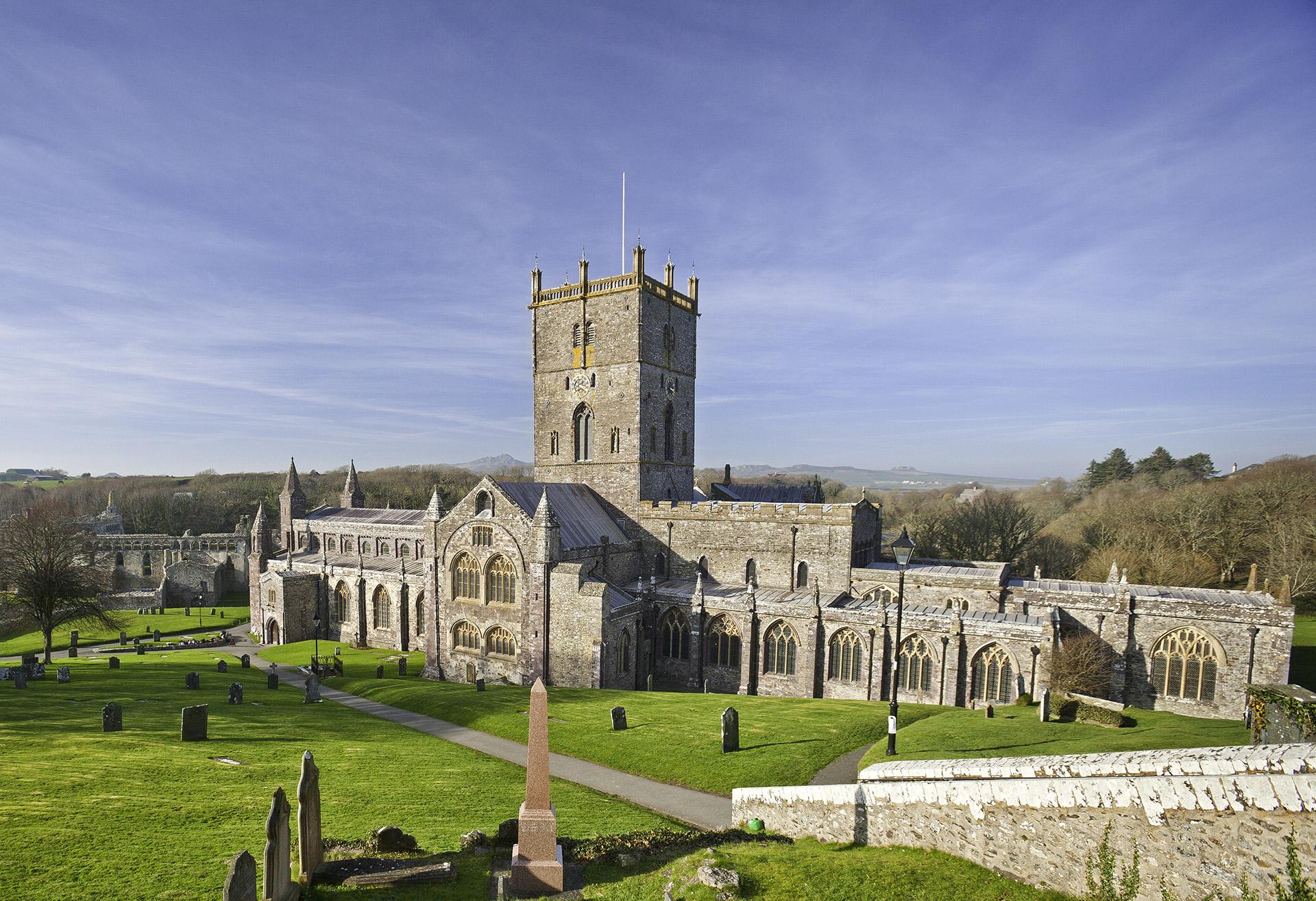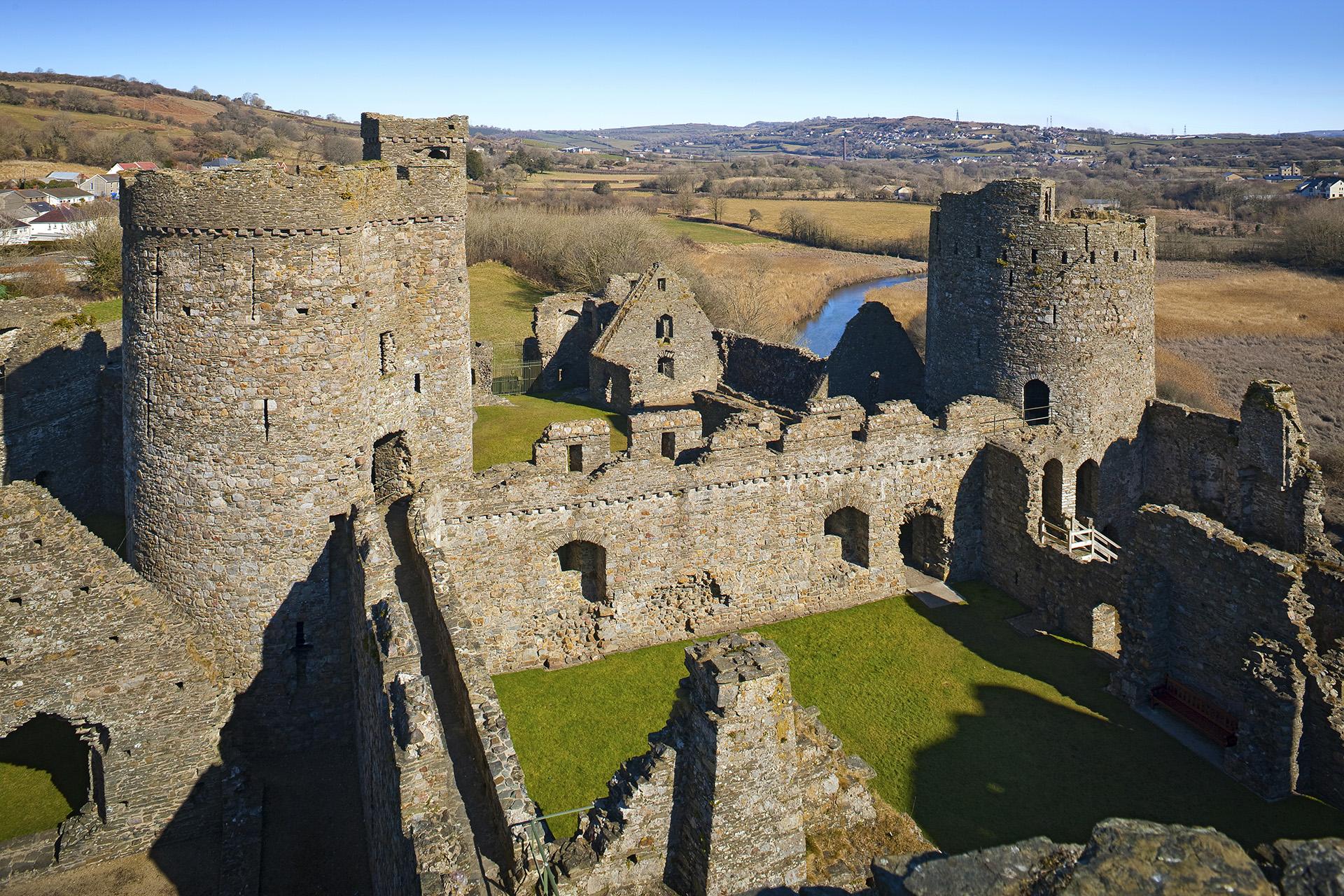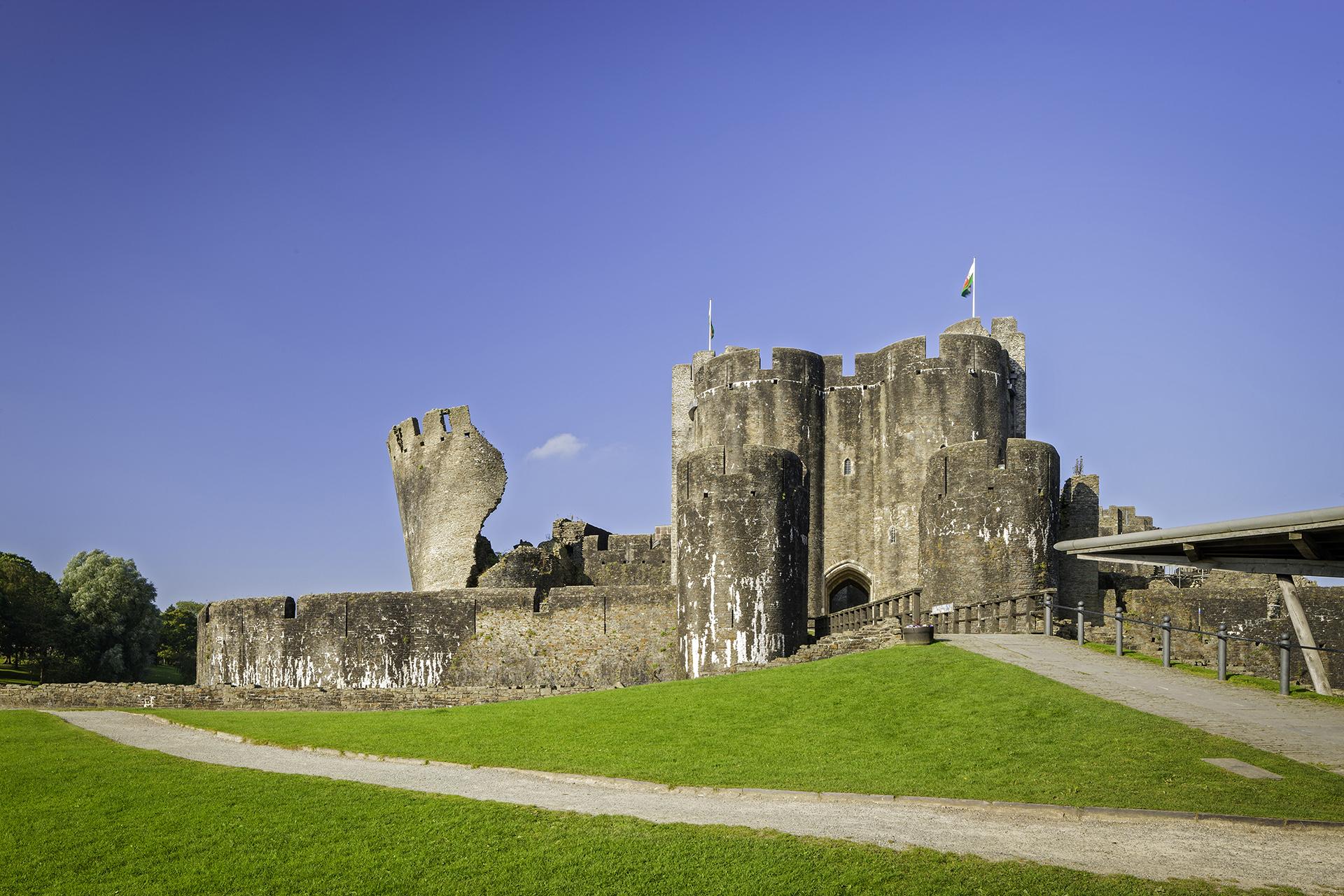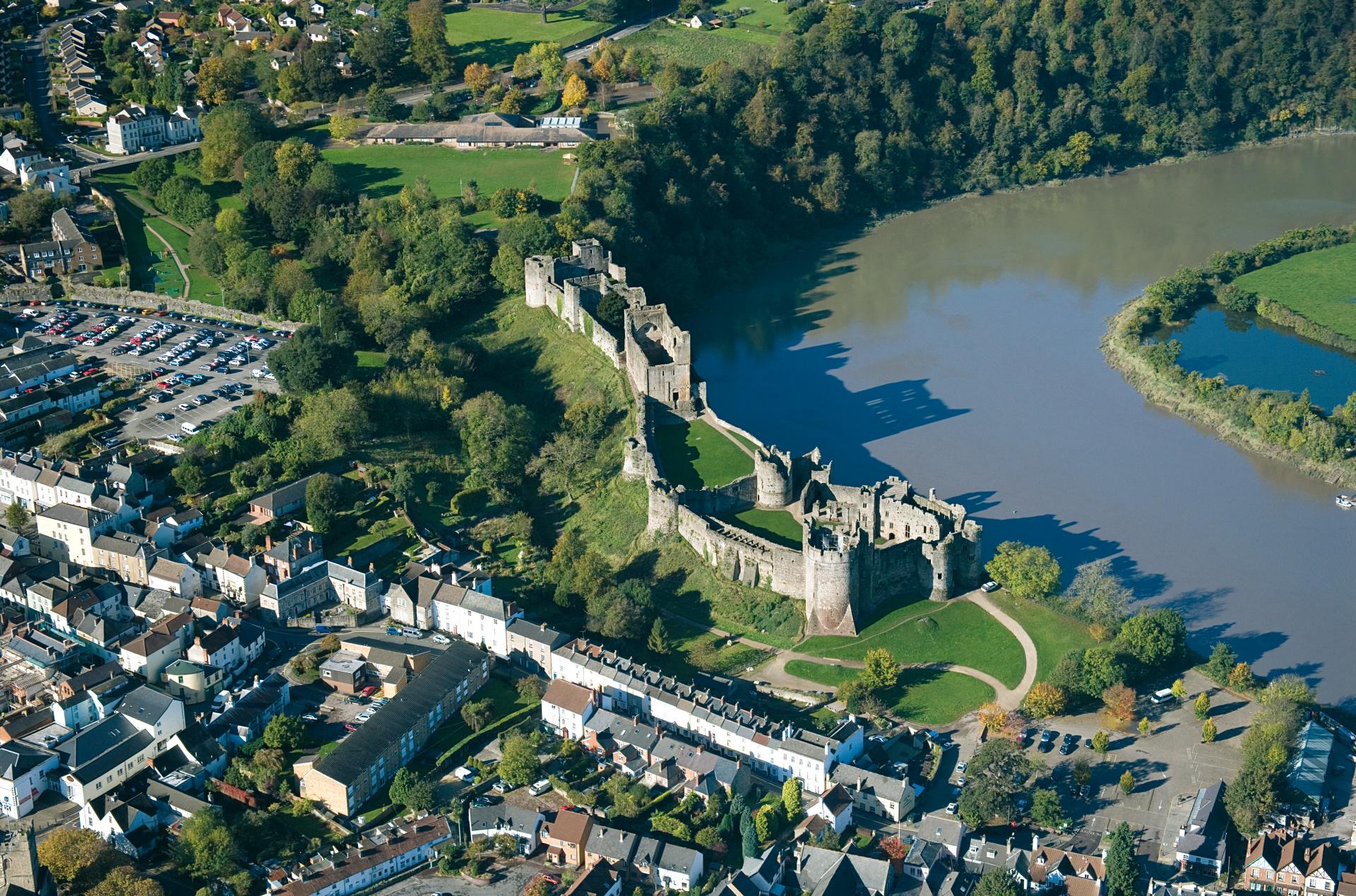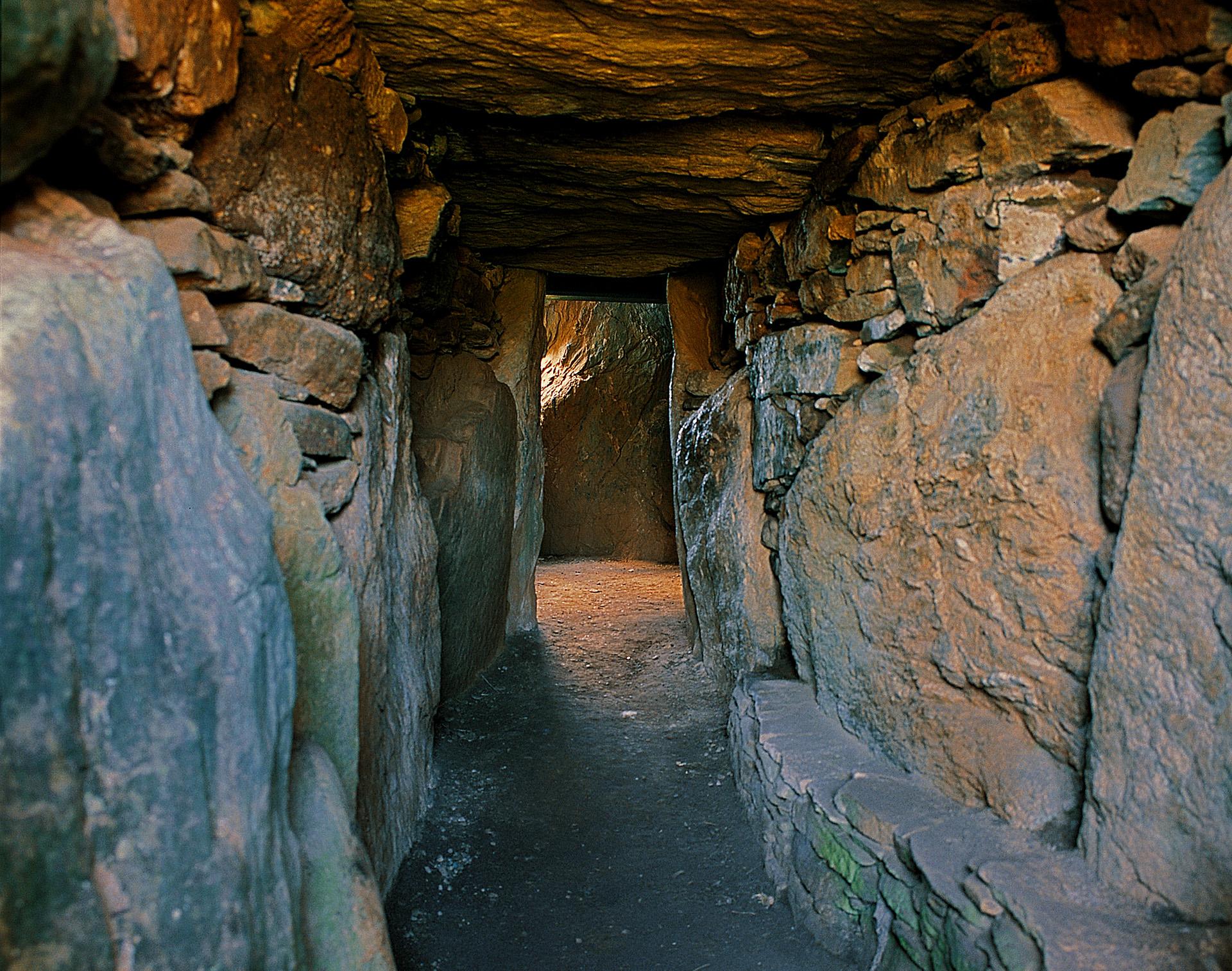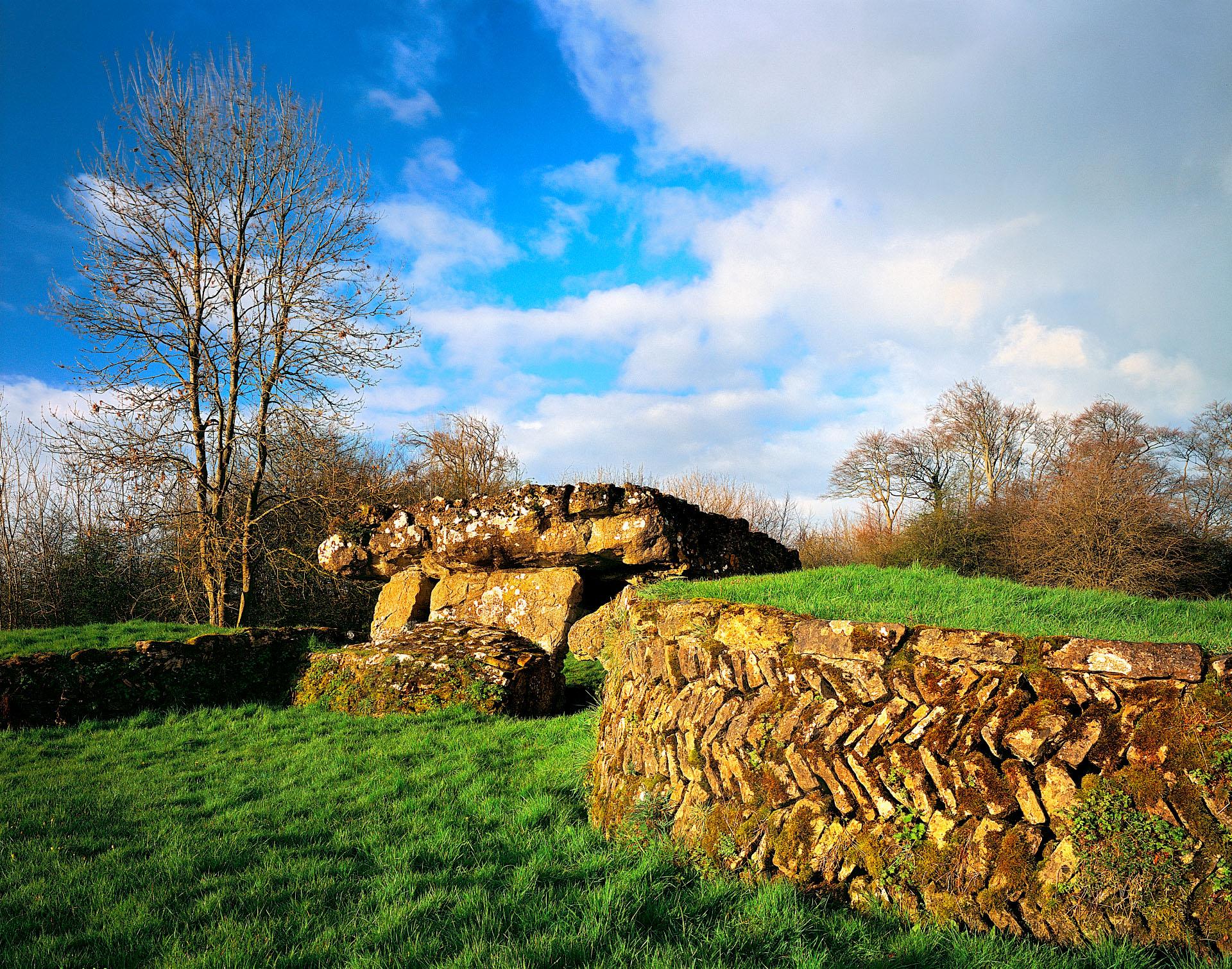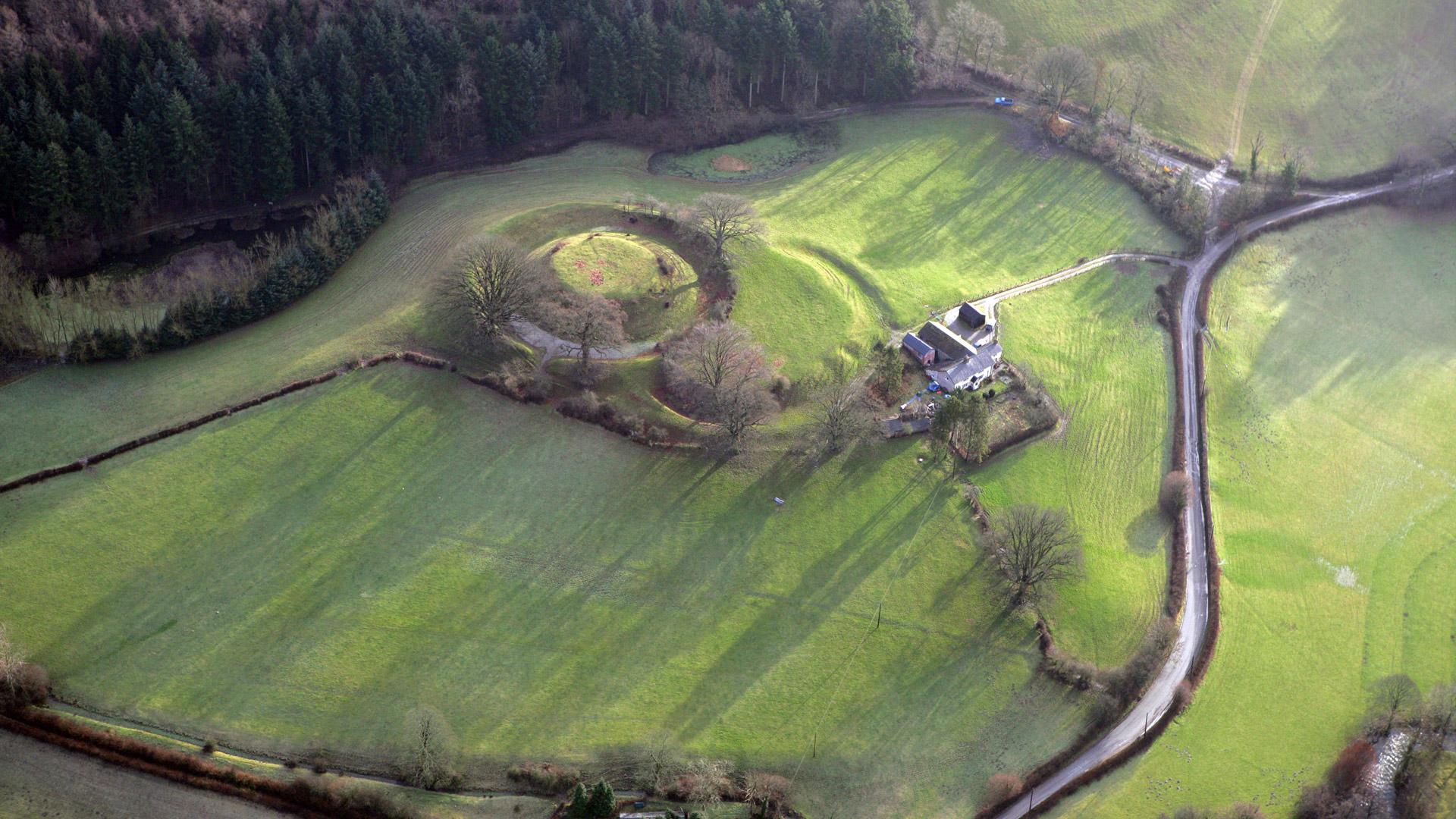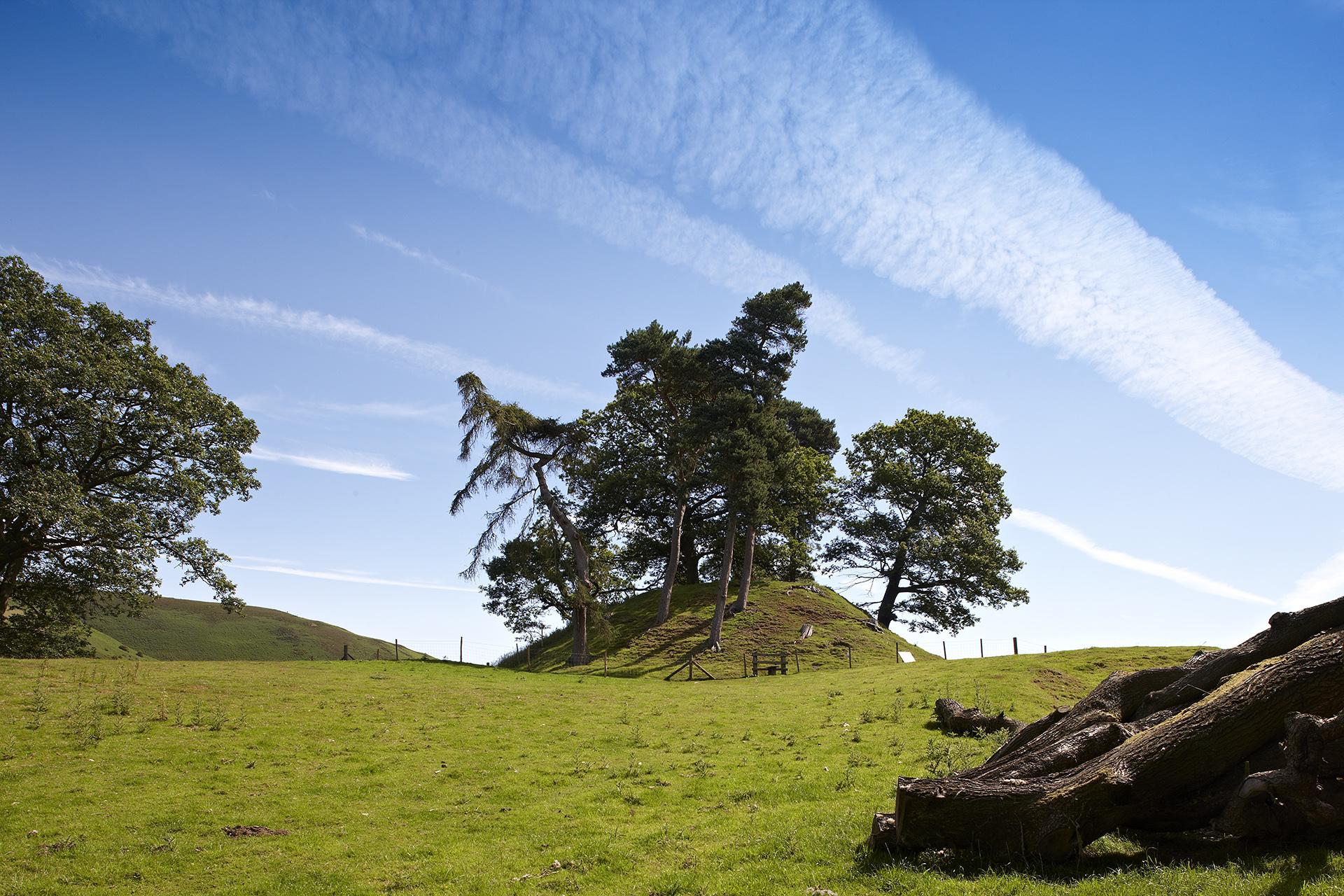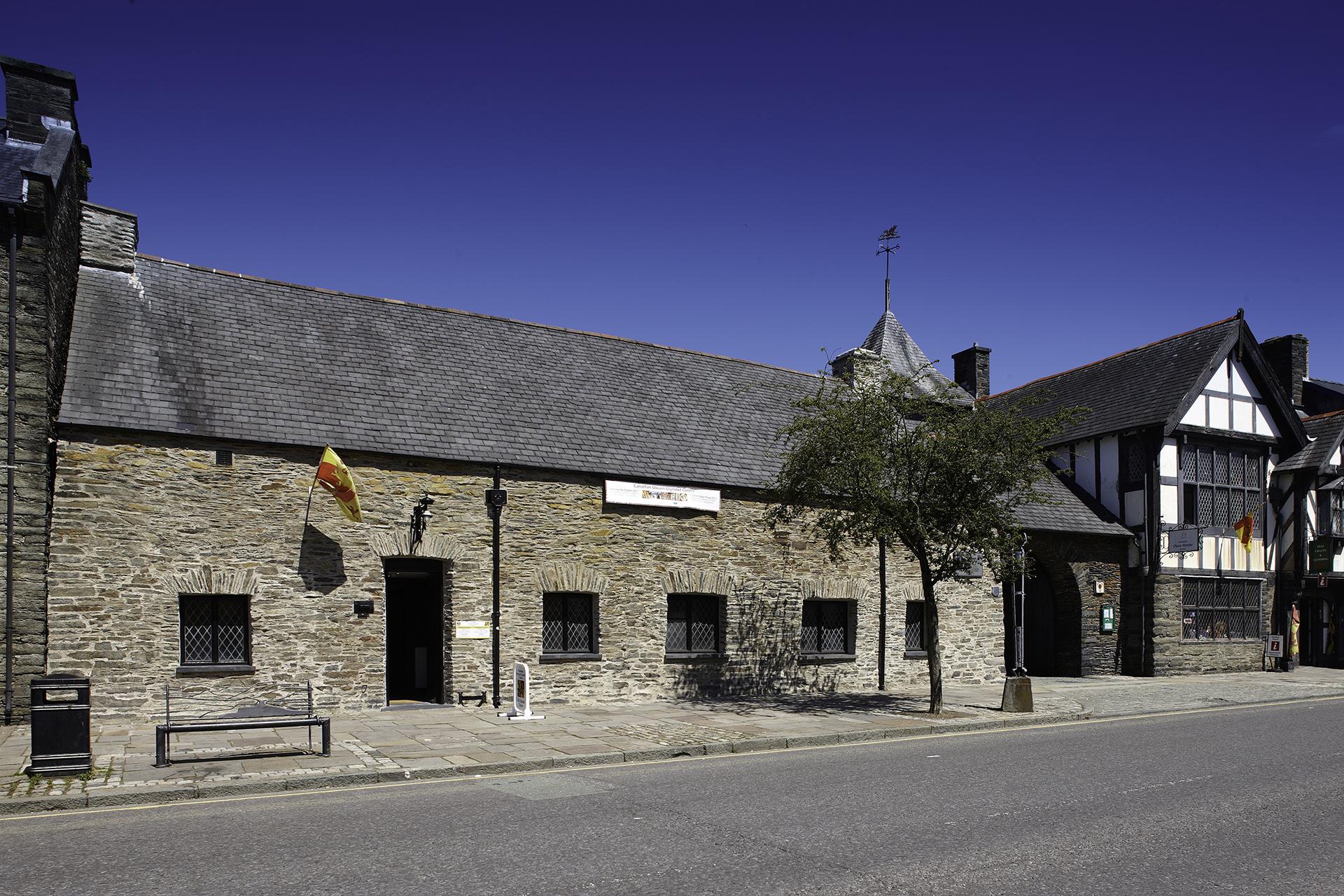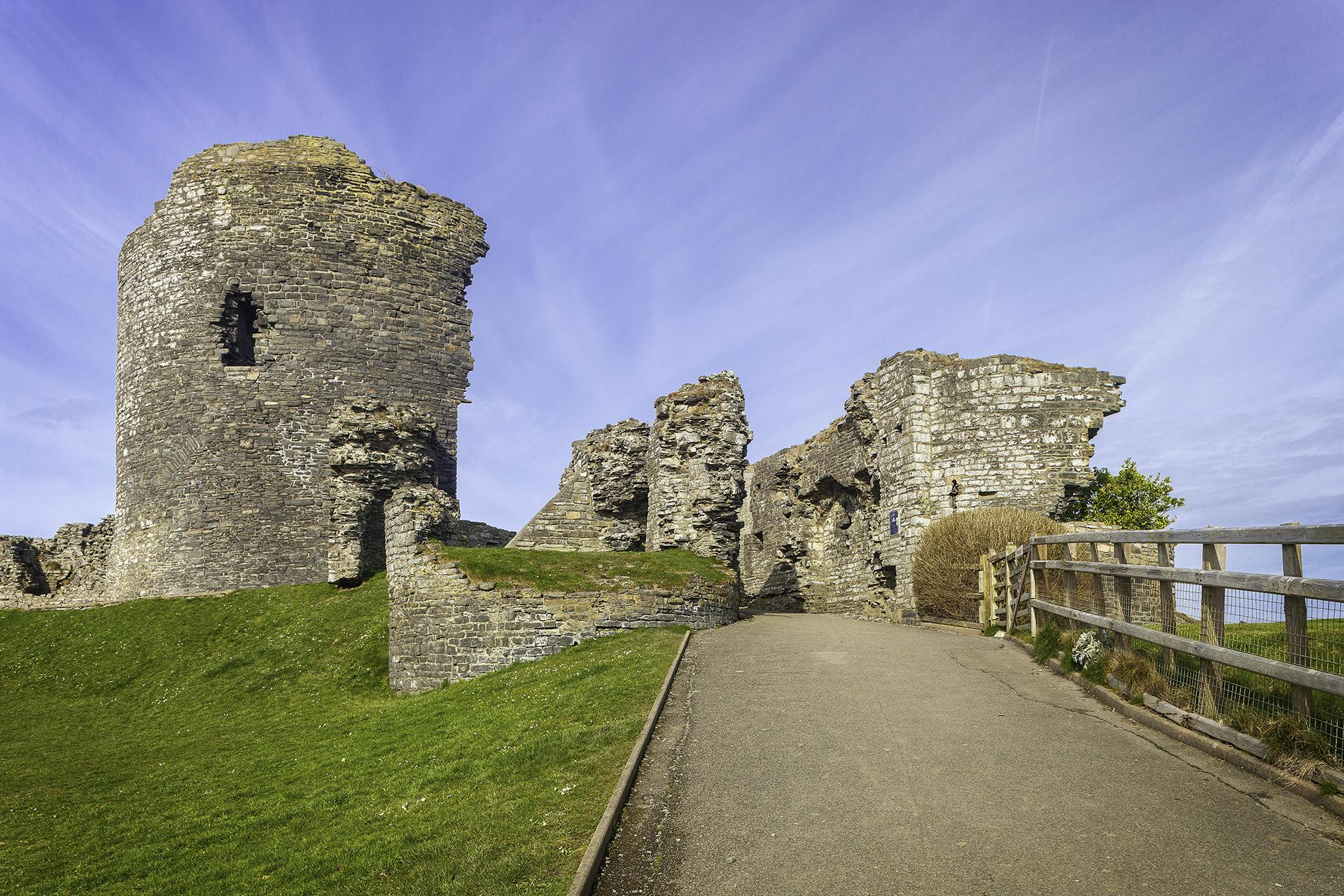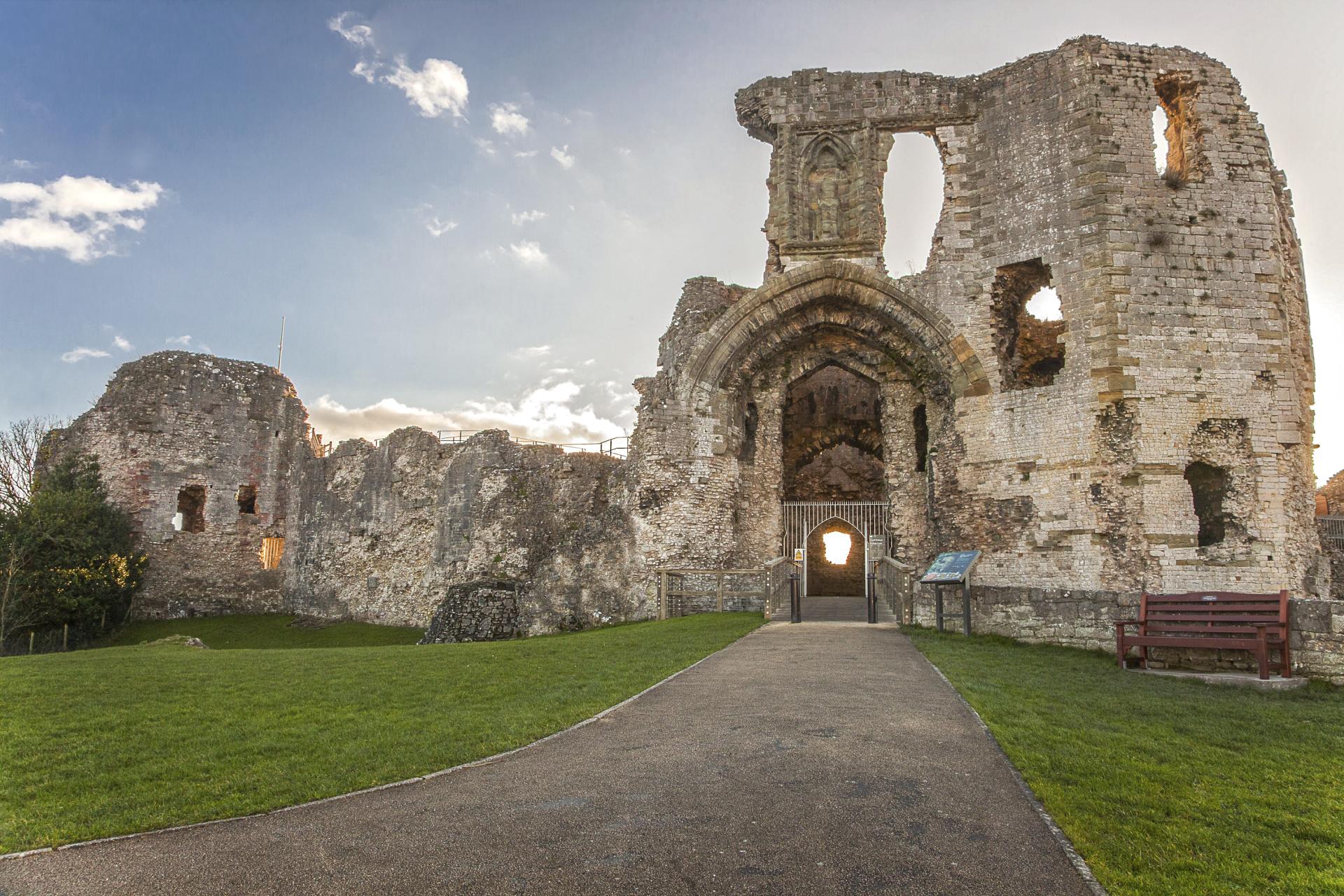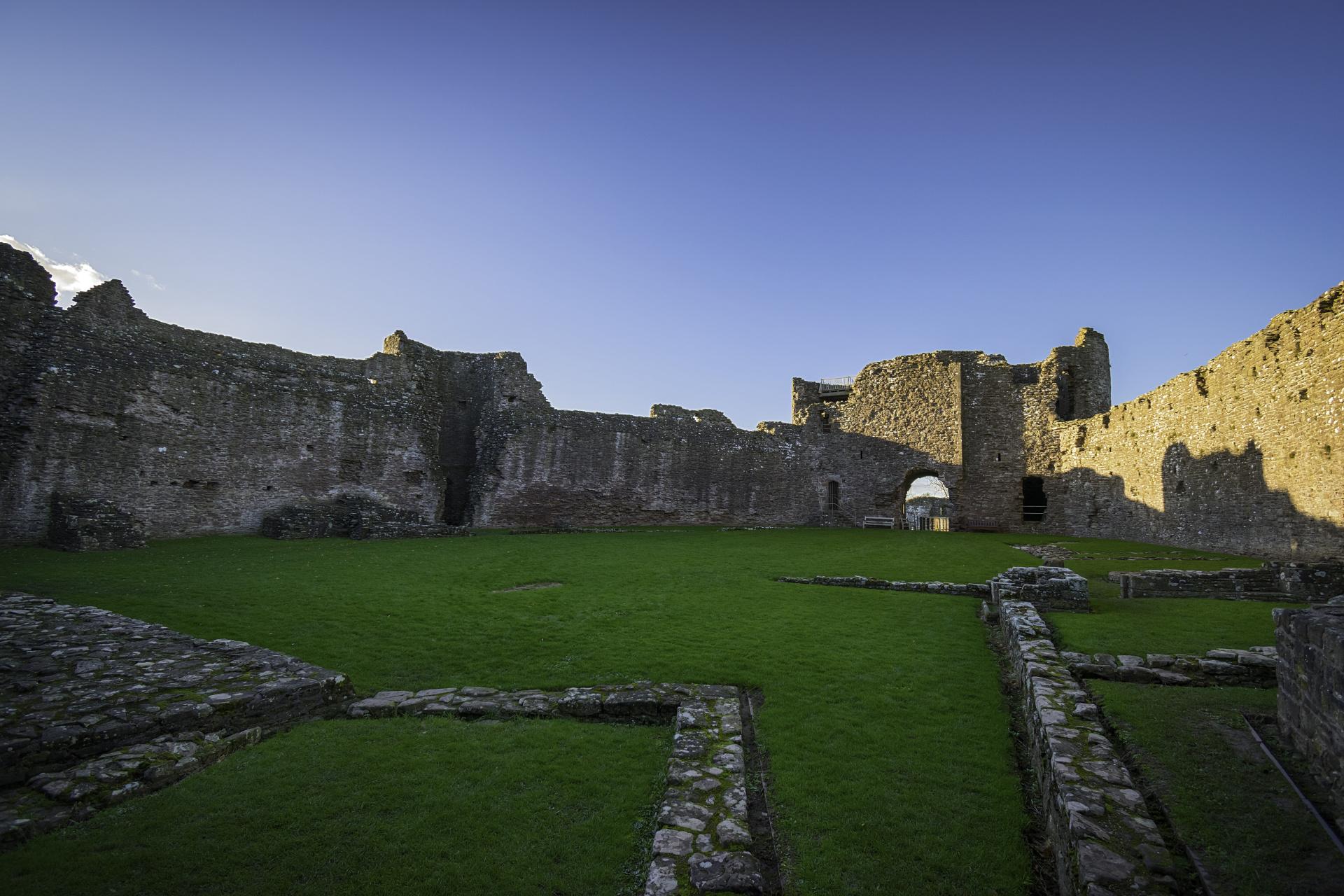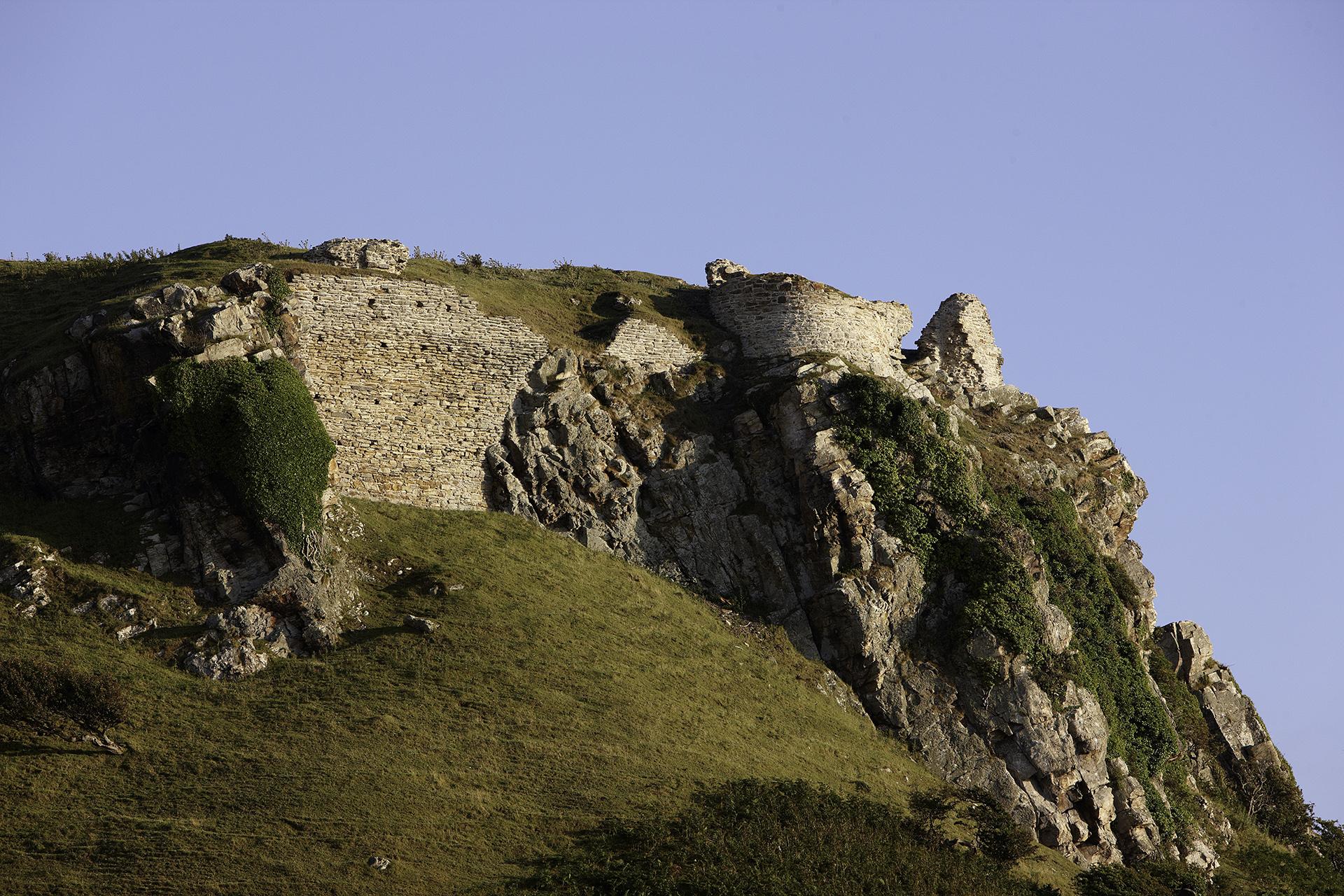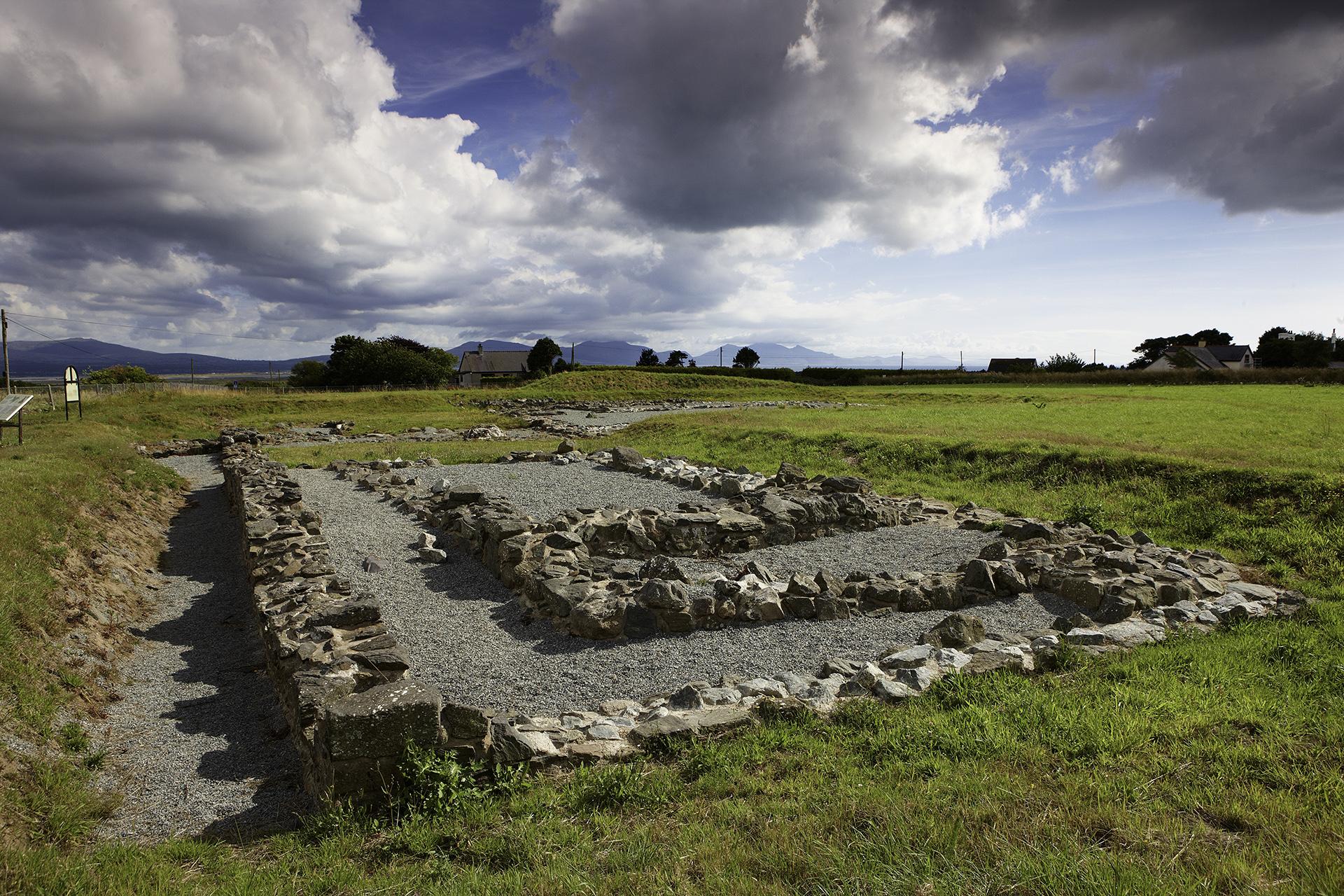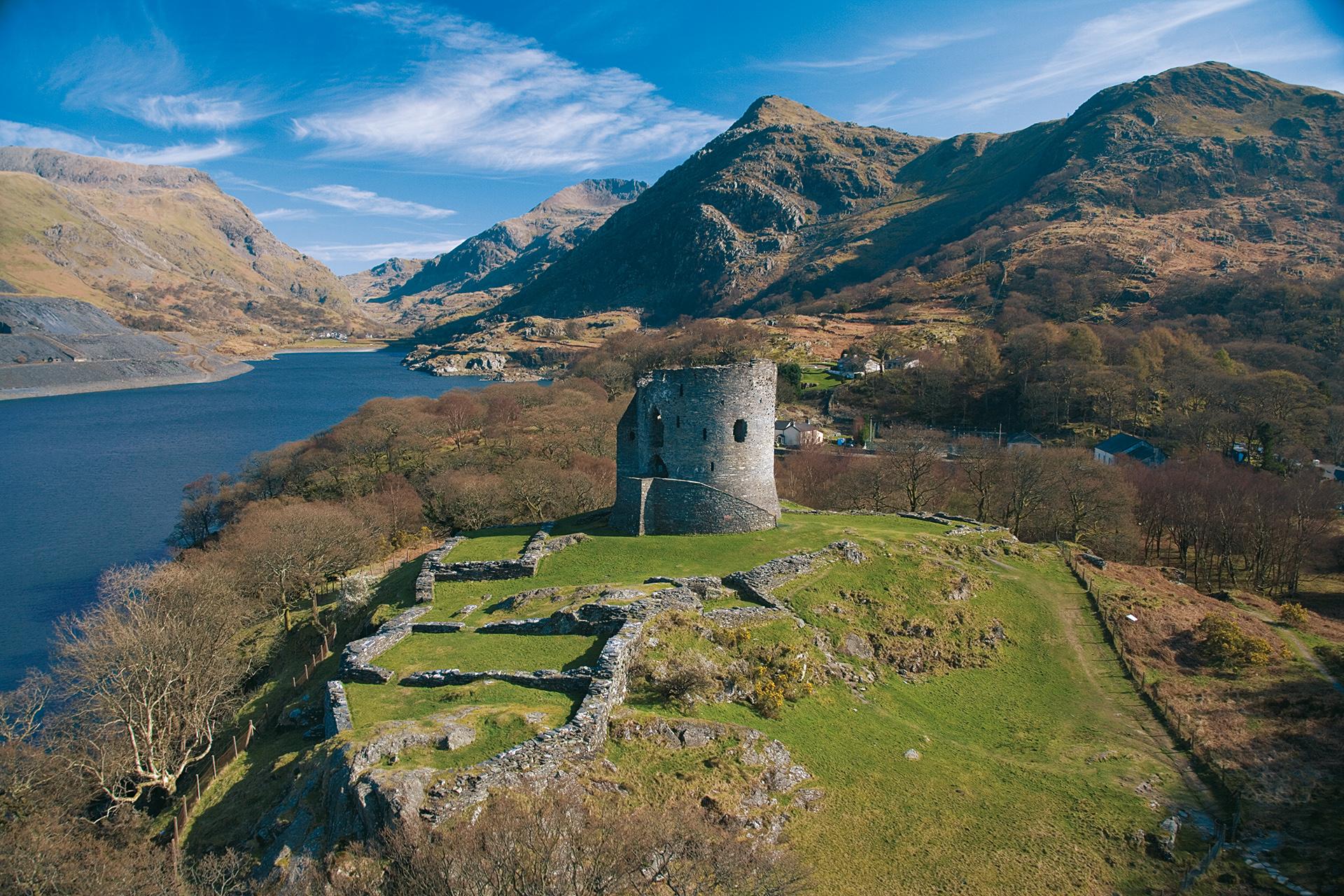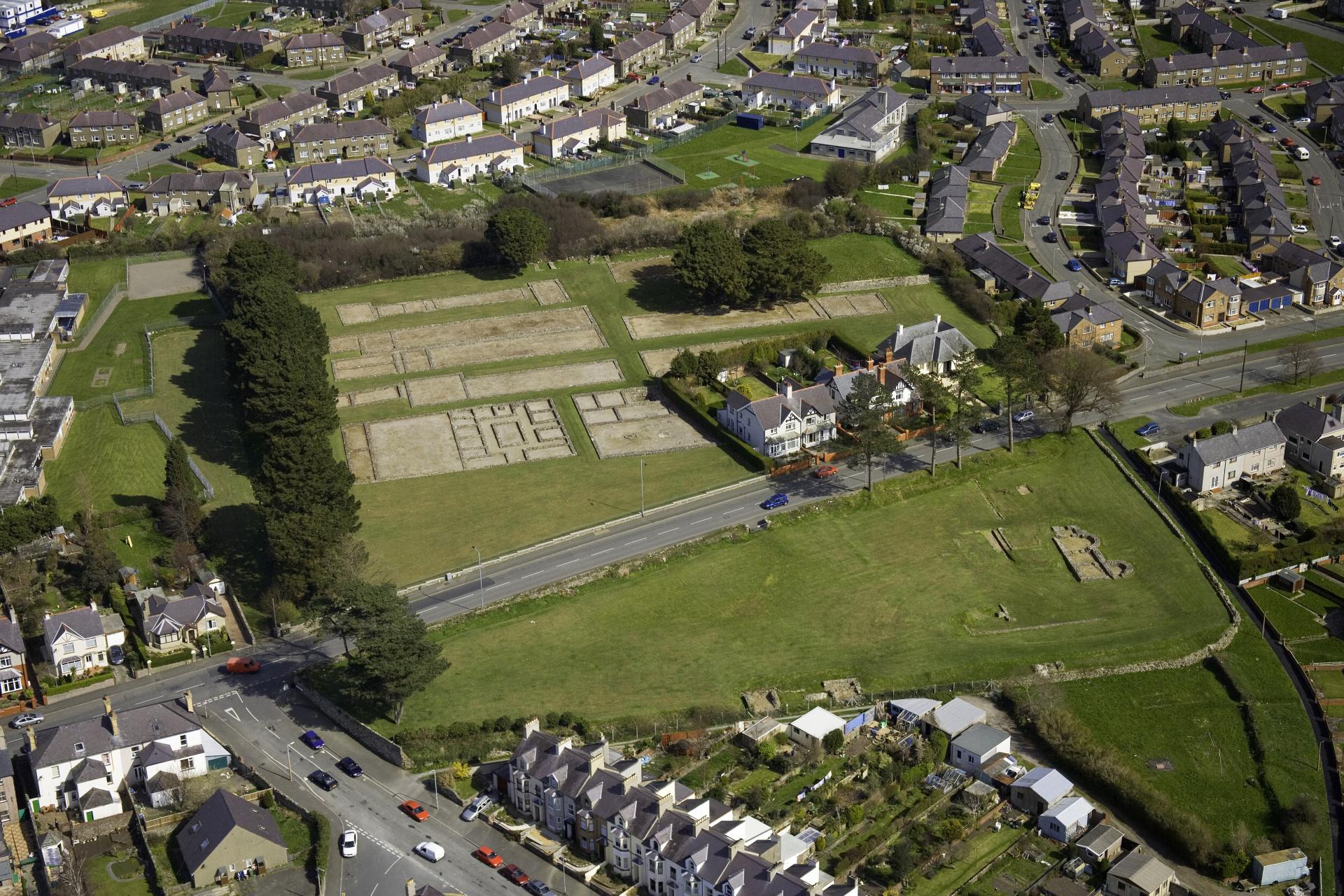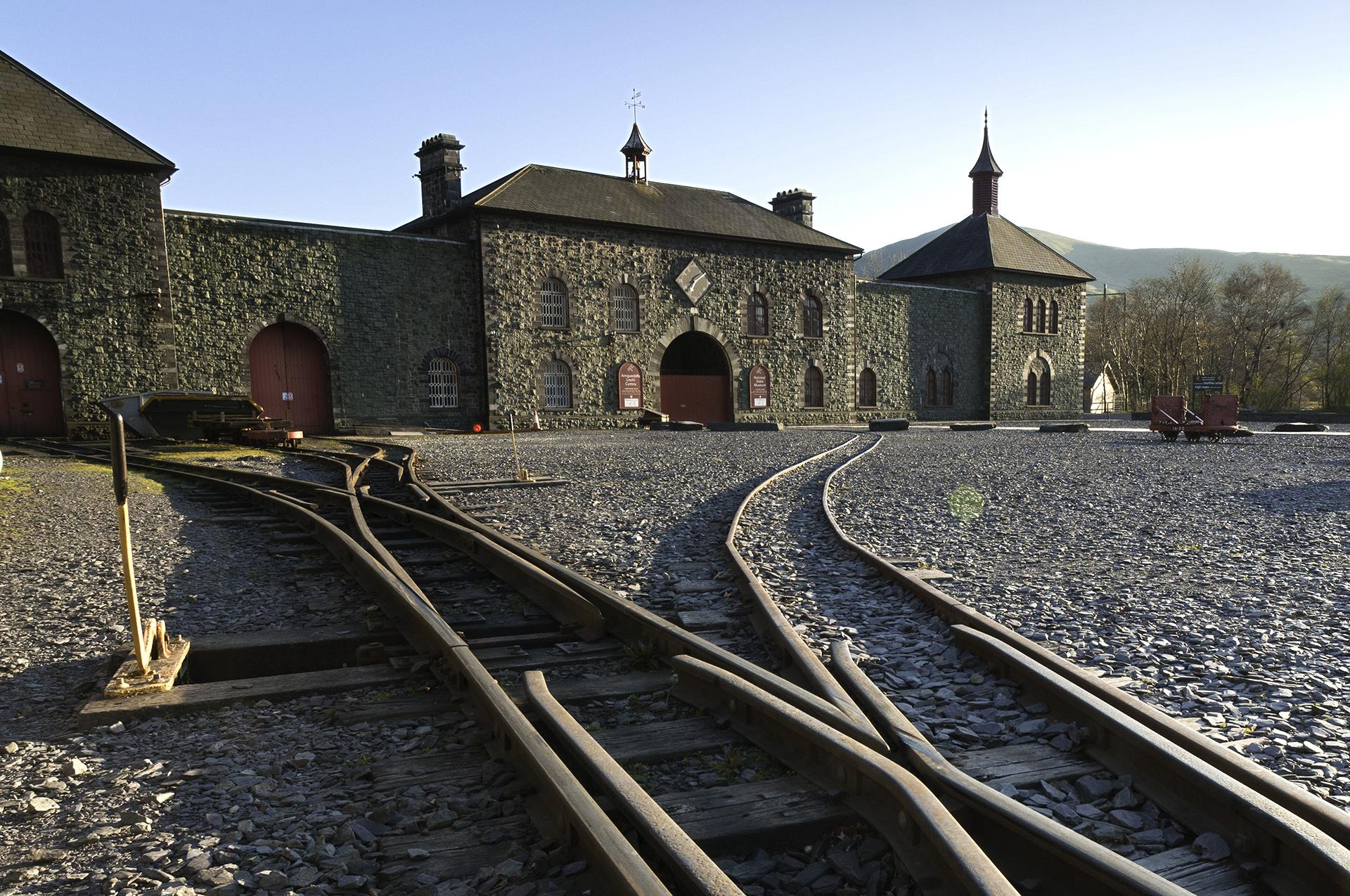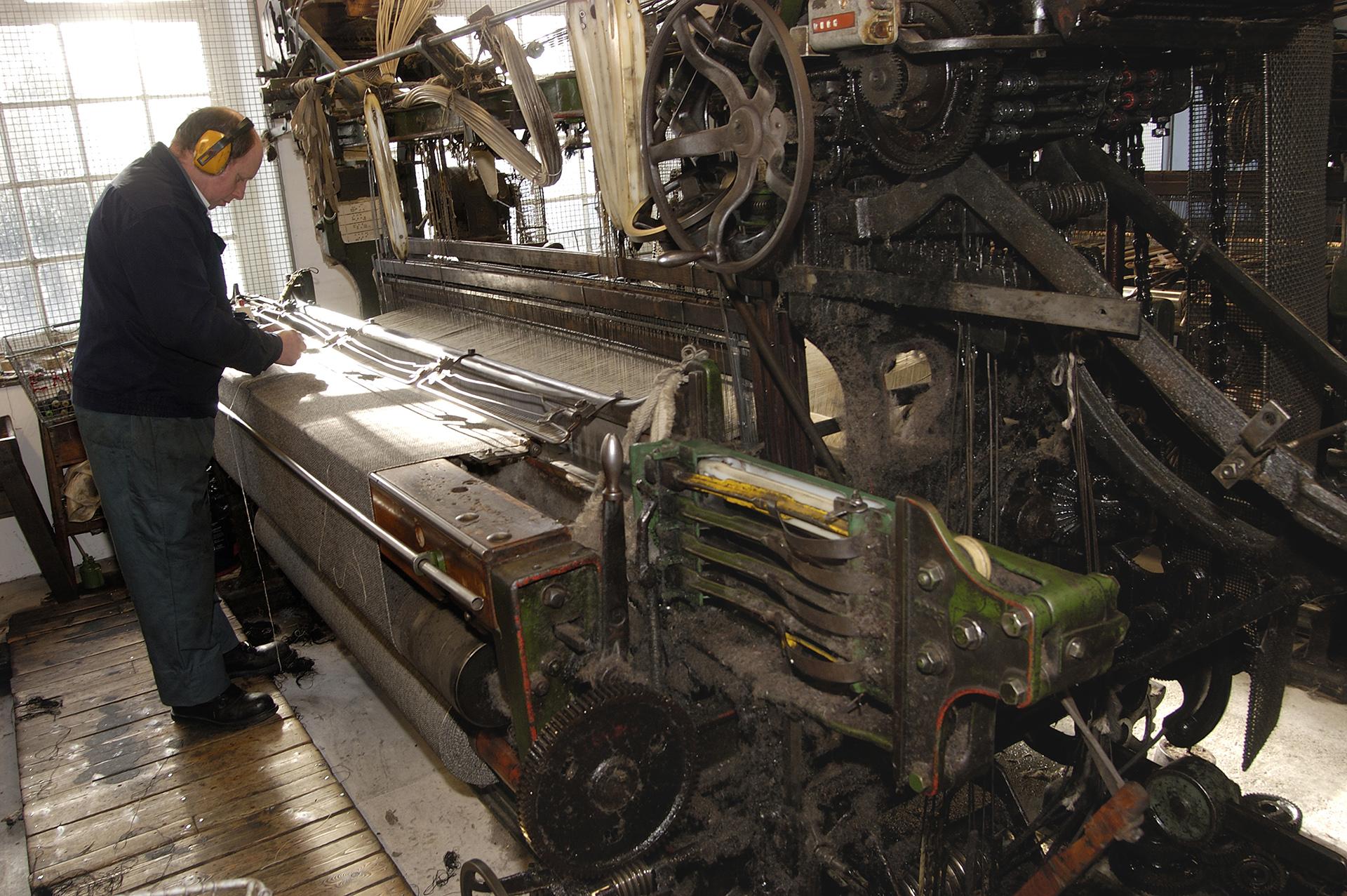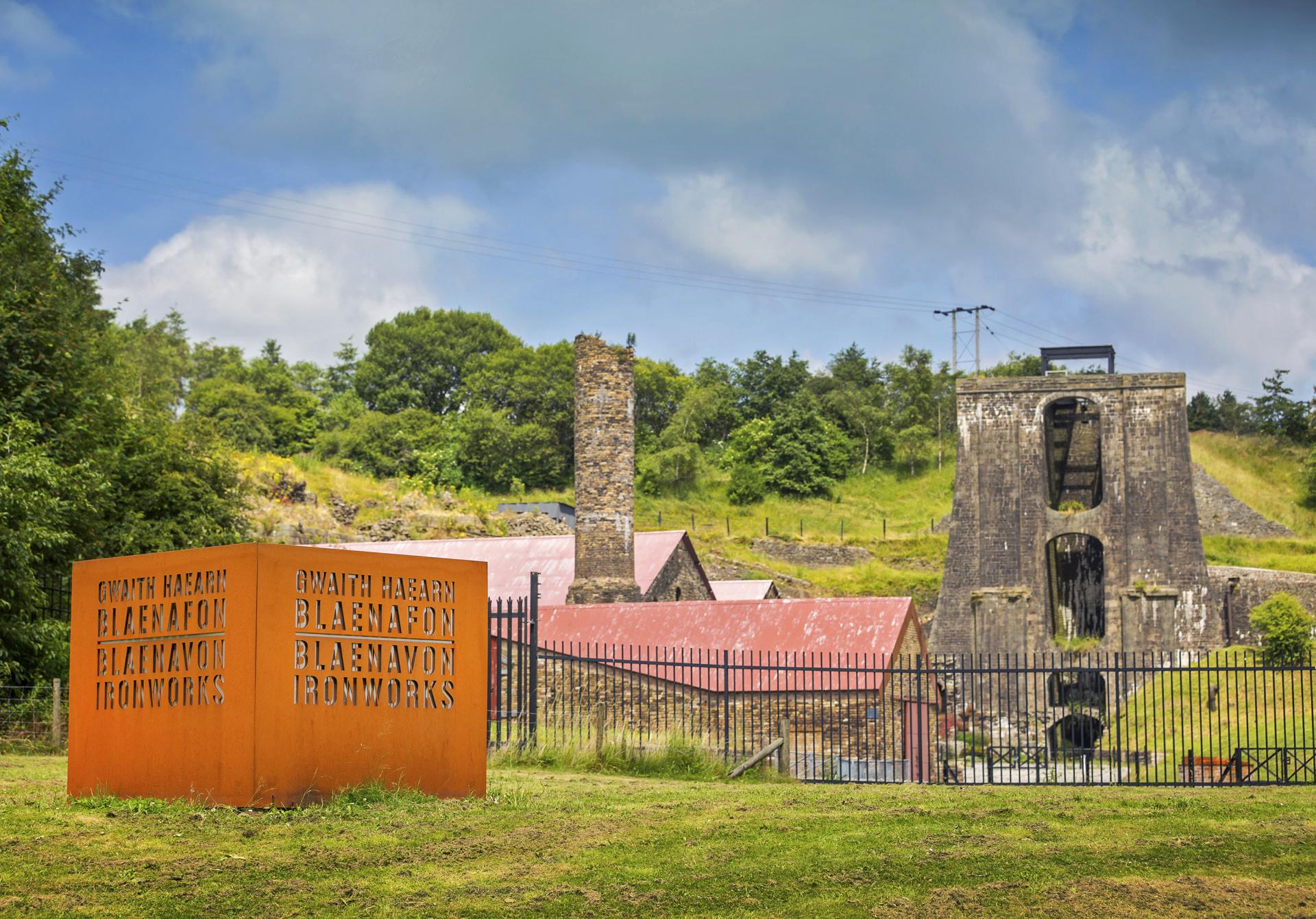Wales history map
Get your walking boots at the ready — it’s time to get out and explore Wales like never before…
Ever wanted to explore Wales based on your favourite periods in history? The Wales History Map allows you to do just that by categorising over 50 of the country’s best historic sites into 12 key historic themes.
Wales is filled to the brim with history — where will your Welsh adventure take you?
For centuries, artists of all kinds have shared their visions of Wales through paintings, poems, stories and songs. These artworks have played a vital role in creating a sense of Welsh identity, and in portraying the land and its people to the world.
Recognisable themes have emerged in literature and the visual arts over the years, ranging from Wales as a beautiful but otherworldly land and the impressive rise and fall of industry.
A tour of inspiring Welsh locations immortalised in art could last a lifetime, so, to get you started, this theme contains just a small selection of sites that have played muse to Wales’s (and Britain's) best-known artists…
What? The childhood home of Welsh literary great, Kate Roberts
Where? Eryri (Snowdonia)
This Grade II listed quarryman’s cottage may not be the grandest site in Wales, but its status as the childhood home of Welsh-language author Kate Roberts draws visitors from near and far.
Readers of Roberts’s works will recognise the house as part of the world that she conjures so vividly in novels such as Traed mewn cyffion (Feet in Chains) and the short-story collection Te yn y grug (Tea in the heather).
Did you know..? In 1965, Kate Roberts bought Cae’r Gors and presented it to the Welsh nation, but it wasn’t until 2005 that sufficient funds were accumulated to restore the tyddyn (smallholding) to the way it would have been during her childhood.
Cae'r Gors,
Rhosgadfan,
Caernarfon,
Gwynedd
LL54 7ET
What? 12th century Cistercian abbey
Where? Monmouthshire
The young J M W Turner travelled extensively in Wales from 1792 to 1799, and the legacy of these sketching and painting tours is a series of breath-taking landscapes, many of which feature Welsh castles and abbeys.
Turner’s sketches and paintings of Tintern Abbey from the 1790s capture both the detail and the drama of structure, whilst reflecting its ruinous state and the extent to which, at that time, nature had started to reclaim the site.
Did you know..? Founded in 1131, Tintern Abbey was the first Cistercian monastery to be established in Wales.
Tintern Abbey
Tintern,
Gwent
NP16 6SE
Cyfarthfa Castle Museum and Art Gallery
What? Museum and art gallery
Where? Merthyr Tydfil
Housed in the magnificent home of the Crawshay iron-making dynasty, this unique site holds a collection of artefacts that spans 2,000 years of local history.
The castle is also noteworthy for its gallery, containing some wonderful paintings from the industrial revolution as well as a striking selection of modern art.
Did you know..? The museum houses the first steam whistle, the first voting ballot box and dresses by Merthyr-born designers, Laura Ashley and Julien McDonald.
Cyfarthfa Park,
Brecon Rd,
Merthyr Tydfil,
Mid Glamorgan
CF47 8RE
Laugharne Castle and Dylan Thomas’s Boathouse
What? 13th century site built by the de Brian family
Where? Carmarthenshire
Laugharne’s association with Dylan Thomas is well known, but you’ll still feel a thrill sitting in the castle’s summerhouse – the very place where the poet and author pieced together Portrait of the Artist as a Young Dog.
Laugharne’s literary link doesn’t begin and end with Dylan Thomas however, as the English author Richard Hughes also wrote his novel In Hazard at the castle. Visitors to the site can see evidence of the friendship between the two authors, including a copy of Portrait of the Artist as a Young Dog, signed by Thomas and dedicated to Hughes.
Did you know…? The castle features in a wonderfully atmospheric painting by JMW Turner, now reproduced on one of the site’s panels. Look out for it when you visit.
King Street,
Carmarthen
Dyfed
SA33 4FA
You can also visit the Boathouse where Dylan lived for the last four years of his life. Close by is his writing shed, where he wrote many of his later works.
Some of the most magnificent castles of Wales are reminders of a turbulent time, when English kings and Welsh princes vied for power. The four spectacular castles along the north-west coast, which together make up the Castles and Town Walls of King Edward in Gwynedd World Heritage Site, are no exceptions.
The tale of King Edward I divides opinion. Some see it as the story of a medieval English king who used mighty castles to subdue the princes and peoples of a neighbouring land.
Others see his formidable fortresses as testaments to Welsh resilience: physical evidence of the sheer amount of effort that Edward I needed to exert in order to gain control over the region during the late-13th and early-14th century.
Whatever your view, each castle is a compelling story in stone. Strong and solid, built to the highest standards of the day and able to withstand attacks from hostile elements and centuries of war.
Visitors to Caernarfon, Conwy, Harlech and Beaumaris should have no difficulty recognising why these captivating castles now form part of a UNESCO World Heritage Site.
What? A 13th century medieval castle
Where? Flint
Begun in 1277, Flint is one of the first castles to be built in Wales by King Edward I.
With impressive views over the Dee Estuary, this solitary castle is often overlooked by its more Western counterparts. Once a defensive masterpiece, the Castle’s most impressive feature is a solitary round tower, isolated from the rest of the inner ward.
Did you know..? Flint Castle famously features in Shakespeare’s Richard II. Flint Castle serves as an important setting for a crucial part of the play – the moment that Richard II is captured by Henry Bolingbroke, ultimately leading to Richard’s abdication and the ascension of King Henry IV.
Flint Castle
Flint,
CH6 5PH
What? A medieval coastal fortification and walled town
Where? Conwy
It is incredible to think that this fine castle and the surrounding town walls were constructed in just over four years. The king made sure the project was overseen by James of St George, a master mason and experienced castle builder.
Conwy cost an estimated £15,000 to build, making it one of the most expensive of Edward I’s Welsh castles. It’s easy to see where the money went – the site includes two fortified gateways, eight massive towers and a great bow-shaped hall.
While you’re here, don’t forget to explore the town and its exceptional medieval town walls – the most complete example of their kind in Wales. Visitors can walk along the walls and look down on the medieval street patterns which are still intact today.
Did you know..? Conwy was built on the site of Aberconwy abbey – the monks were moved to a new site south of the town at Maenan.
Castell Conwy
Rose Hill St,
Conwy
LL32 8AY
What? A 13th century fortress
Where? Anglesey
Known as Edward I’s ‘unfinished masterpiece’, Beaumaris Castle is undoubtedly an impressive fortress and a fine example of concentric ‘walls within walls’ castle design. Indeed, Beaumaris has been described as ‘the most technically perfect castle in Britain’.
The king’s master mason, James of St George, personally oversaw the construction of this superb stronghold. It took a staggering 450 masons, 400 quarrymen and over 2,000 skilled labourers to dig the moat and build the sturdy walls.
Did you know..? Beaumaris Castle was named after the Norman-French “Beau Mareys”, meaning castle on the “fair marsh”.
Beaumaris Castle
Castle St,
Beaumaris,
Isle of Anglesey
LL58 8AP
Castell Caernarfon and Town Walls
What? A medieval fortress palace and town walls
Where? Caernarfon
Edward I chose the site of a Norman motte and bailey castle for Castell Caernarfon – his largest, and maybe his most impressive, Welsh fortress.
Caernarfon’s castle and town walls were raised as a single entity. It was designed to act as the nerve centre of Edward I’s newly conquered territories.
With breathtaking views over Caernarfon and the Menai Strait, a visit to the Castle’s exceptional Eagle Tower is not be missed!
Did you know..? Castell Caernarfon was the birthplace of the future King Edward II.
Castell Caernarfon
Castle Ditch,
Caernarfon,
Gwynedd
LL55 2AY
What? A 13th century medieval stronghold
Where? Harlech
Perched on a rocky crag overlooking Cardigan Bay, Castell Harlech is an example of a stronghold that has been tailor-made for its environment.
Built quickly and relatively cheaply (in comparison to fortresses like Caernarfon and Conwy), the structure uses the intimidating cliff face to its advantage and is impregnable from virtually every angle.
While here, don’t miss the ‘way from the sea – a 200-foot-long set of steps that connect the castle to the cliff base below. This clever feature enabled castle inhabitants to endure long sieges.
Did you know..? In 1468, Harlech Castle fell to the Yorkists, giving rise to the traditional song ‘Men of Harlech’
Castell Harlech
Harlech,
Gwynedd
LL46 2YH
From the grandeur of Cistercian abbeys to the quiet modesty of village chapels, Wales is a country that boasts hundreds of religious sites including impressive examples of non-conformist, Anglican and monastic monuments, among others.
Once the centre of Welsh society, these revered places were essential parts of community life. Many still function as places of worship, and all stand as fascinating examples of Wales’s connection to religion through the ages.
A visit to any of these esteemed Welsh sites will show how ancient beliefs, inspiring historical figures and traditions have helped shape Welsh cultural heritage, language and way of life over the centuries.
This itinerary offers an insight into the depths of Wales’s religious landscape, providing an overview of a variety of religious sites and a starting point for exploring them…
Rug Chapel and Llangar Old Church
What? Surprisingly decorative religious churches standing on the river Dee
Where? Denbighshire
Rug Chapel was founded as a private chapel by Arch Royalist Colonel William Salesbury in the 17th century. Contrary to its modest exterior, the interior is decorated decadently with fine wood carvings and rose motifs.
Nearby Llangar Old Church is a few centuries older than Rug Chapel but similarly, its whitewashed exterior hides the aesthetic wonders within. Inside, the original 15th century wall paintings still survive, thanks in part to the church making way for a new place of worship in Cynwyd in the 1850s.
Many visitors combine a visit to these sites with a walk along the river, which boasts beautiful views and many places to stop and take in the stunning landscapes.
Did you know..? Despite being called a chapel, traditionally associated with non-conformity, Rug is in fact an Anglican church!
Rug Chapel and Llangar Old Church
LL21 9BT
01490 412025
0300 0256000
What? A grand Cistercian abbey
Where? Ceredigion
Translating directly from Latin simply as ‘the Vale of Flowers’ or ‘Ystrad Fflur’ in Welsh, Strata Florida is located in a remote corner Ceredigion, and was once home to Cistercian monks.
The plan of the original abbey can still be clearly traced, and you only need admire the majesty of the huge carved west doorway to appreciate how impressive this building must once have been.
Some of the original richly decorated tiles from the abbey are still intact and many tools, coins and other personal objects have been found here in recent years following excavations at the site. These can all be seen on display in the visitor centre.
Did you know..? A pilgrimage for lovers of Welsh poetry, the site is said to be the final resting place of famed medieval poet, Dafydd ap Gwilym who allegedly lies beneath the Yew tree in the church-yard.
Strata Florida Abbey
SY25 6ES
01974 831261
What? An extra-ordinary, non-conformist
Victorian chapel
Where? Swansea
Chapels were built in their hundreds to accommodate the religious revival in 19th century industrial Wales. As well as developing into places of worship, these chapels of non-conformity also became the social and educational hearts of their communities. Many chapels held services in Welsh, significantly contributing to the use and preservation of the language.
Recognised for its wonderful Victorian architecture, Tabernacle is an extra-ordinary example of a Welsh chapel still open for worship. Built in 1872 at a cost of £18,000, its congregation peaked at over a thousand members in 1910. This grand building however is not your typical non-conformist chapel, traditionally much plainer and simpler.
Tabernacle has had a number of notable Ministers, including Trebor Lloyd Evans who led worship here from 1945-1964. He was a great champion of the Welsh language and campaigned for a Welsh medium school in the area.
Over the years. concerts by the Morriston Tabernacle Choir have attracted world-famous singers, and celebrated organists have given recitals on the 3-manual organ, recently restored by Harrison & Harrison.
Did you know..? Tabernacle Chapel is thought by many to be the largest, grandest and most expensive chapel ever built in Wales.
Morriston Tabernacle
Woodfield Street
Morriston
Swansea
SA6 8DA
For an example of a different, simpler non-conformist chapel in a rural location, visit Capel Newydd in Llanengan. A Welsh independent chapel, it is possibly the earliest surviving non-conformist chapel in north Wales.
What? A 12th century cathedral
Where? St Davids, Pembrokeshire
Still a vibrant and popular place of worship, St Davids Cathedral has been a site of Christian pilgrimage for more than 800 years.
While the present monument was built during the 12th century, it sits upon the site of an earlier, 6th century monastery built by St David, the patron saint of Wales.
The presence of the cathedral has given St Davids city status, making this remote location in the far end of Pembrokeshire Britain’s smallest city – in terms of size and population.
Just a stone’s throw away from the cathedral lies St Davids Bishop’s Palace. Originally built by Bishop Henry de Gower, this beautiful ruin was once a masterpiece, with lavish decorations, corbels carved as human heads and striking chequerboard stonework – all a testament to the wealth and status of medieval men of religion.
Did you know..? St Davids Cathedral survived a severe earthquake in the 13th Century, causing structural damage which is still noticeable today. Indeed, the floor slopes noticeably, the arcades are warped in places, and the east and west ends of the building differ in height by roughly four metres!
St Davids Cathedral
The Pebbles,
St Davids,
Pembrokeshire
SA62 6RD
Admission free.
Looking for other fascinating religious sites? Wales has hundreds more, including St Winifride's Chapel and Holy Well — a grand 16th-century chapel that surrounds a 12th-century holy spring.
From wars with France to the Cold War, Pembrokeshire has played a key role in helping to defend our country over the centuries.
The strength of the area’s military and maritime history is evident from the sheer scale of the battlefields, castles and remnants of defensive systems scattered across Pembrokeshire.
Following the Defence of the Realm route will allow you to discover how Pembrokeshire helped keep Britain safe from invasion.
What? A 30m long tapestry
Where? Fishguard Town Hall, Pembrokeshire
This remarkable work of art depicts what happened when the British mainland was last invaded, back in February 1797.
A closer look at the design will reveal how the women of Pembrokeshire forced the invading force to surrender. The tapestry is complemented by artefacts and interpretation boards, as well as an audio visual presentation showing its making.
Did you know..? The tapestry features local heroine Jemima Nicholas, who, alone and armed with only a pitchfork, arrested 12 French soldiers.
Town Hall
The Square
Fishguard
SA65 9HA
What? Scheduled Ancient Monument and Grade II listed military coast artillery fort
Where? Angle, Pembrokeshire
Chapel Bay Fort is one of the earliest known of its type in the world. Completed in 1891, it could hold 96 men in its barracks, but was often garrisoned by much smaller numbers.
During World War I, ships suspected of carrying contraband would be moored and examined here, while the guns of the Fort were trained on them!
Did you know..? During the Second World War, Chapel Bay Fort actually controlled some of the anti-aircraft guns that defended the coastline.
Chapel Bay Fort and Museum
Angle, Pembrokeshire
SA71 5BE
What? Small coastal town on the River Cleddau
Where? Pembrokeshire
Over the centuries Pembroke Dock has been a key player on Britain’s frontline. The Pembroke Dock Heritage Centre, Royal Dockyard Chapel and Flying Boat Workshop are all open for visitors wishing to explore the maritime heritage of one of Britain’s most westerly towns.
Nearby, the Garrison Chapel, Defensible Barracks and the Dockyard Walls and Gun Towers all provide further clues to the history of this special town and its links to Her Majesty’s Navy.
Did you know..? Pembroke Dock has built and launched no fewer than five Royal Yachts.
Pembroke Dock
Pembrokeshire
SA72 6WS
What? Local cemetery dating back to 19th century
Where? Pembroke Dock, Pembrokeshire
Llanion Cemetery is situated on the north side of the A477 trunk road at the entrance to the town. Owned by the county council, the cemetery opened in 1869.
It is home to a number of war graves – 24 from World War I, situated in the western part of the cemetery, and 54 from World War II, including 19 sailors from the bombed HMS Puckridge. The remaining graves are of airmen connected with the RAF Flying-Boat base at Pembroke Dock.
Did you know..? A number of post-war graves can also be found inside, one being of a Polish pilot, Z Bartosuk, who was killed in August 1952 while making a forced landing at the nearby disused airfield at Carew Cheriton.
Llanion Cemetery,
London Road,
Pembroke Dock
SA72 4RS
Carew Cheriton Control Tower and Centre
What? Former RAF airfield
Where? Carew, Pembrokeshire
During the Second World War numerous squadrons were based at Carew, all tasked with guarding Britain’s western approaches. The airfield was also used during World War I by airships patrolling the Atlantic shipping lanes. The control tower, also known as the watch office, has been restored by the Carew Cheriton Control Tower Group and is open to the public.
A unique World War II RAF watch office forms the core of this site, but guests can also discover a restored air raid shelter and an original Avro Anson aircraft as part of their visit.
Did you know..? The origins of this site’s design are rather mysterious – the control tower was not built to an approved Air Ministry design and no one knows why!
Carew Cheriton Control Tower
Carew, Pembrokeshire
SA70 8SX
The story of the lords of the southern March is littered with tales of ambition, rivalry, power, invasion and battles. But who were they?
After the Norman seizure of England, the first Norman kings allowed trusted supporters to take lands on the Welsh borders — amongst them were the early lords of the southern March. They had virtual independence over their new territories, building great castles and founding fine abbeys, many of which still survive.
Today these sites help to tell the story of the lords, the landscape in which they lived and their vital role in the history of Wales.
What? Medieval castle
Where? Pembroke, west Wales
Founded by Roger de Montgomery, earl of Shrewsbury, Pembroke Castle was at the heart of the Norman-controlled lands of south-west Wales. Situated on the estuary of the Cleddau River, it became home to William Marshal, who had risen to become earl of Pembroke through his faithful service to the Plantagenet kings. He was responsible for beginning the wholesale reconstruction of the castle in stone in the early 13th century.
Visitors today can explore the labyrinth of passageways and towers, take in the views from the 75ft-high Great Keep or descend into the Wogan, a cavern beneath the inner ward.
Did you know..? Henry VII, the first monarch of the Tudor dynasty, was born at Pembroke Castle in 1457.
Pembroke Castle
Pembroke
SA71 4LA
Other Marcher castles in west Wales include:
What? Coastal stronghold built in the 12th century
Where? Kidwelly, Carmarthenshire
This picturesque castle was one of a number of Marcher strongholds built along the coast of south Wales. Established by Bishop Roger of Salisbury, one of the most influential figures in Henry I’s court, the castle endured many attacks over the centuries; regularly changing hands as the Welsh princes continued to fight against the Marcher lords.
The story of the struggle between the Welsh and the Marcher lords is interpreted on site. This includes the story of Princess Gwenllian who led a fighting force against Maurice de Londres, lord of the castle, in 1136. Their armies met in bloody battle about 2 km north-west of the castle. The Welsh were defeated, and the warrior princess was captured and beheaded.
Just outside the castle is a memorial to Princess Gwenllian. Make sure to look out for it during your visit.
Did you know..? – Princess Gwenllian’s young son would grow up to become the Lord Rhys, a powerful ruler of the Welsh kingdom of Deheubarth. He held Kidwelly Castle during one of its periods as a Welsh stronghold.
Kidwelly Castle
Castle Rd,
Kidwelly SA17 5BQ
Other Marcher castles nearby include:
What? 13th-century fortification
Where? Caerphilly
Originally built by the Marcher lord, Gilbert de Clare, Caerphilly Castle remains the largest medieval fortress in Wales. Begun in 1268, it was one of the first completely consistent concentric castles (two sets of walls, one inside the other) in Britain.
With its formidable defences, Caerphilly Castle was a masterpiece of military planning and a forerunner for the Edwardian castles in north Wales. Many of its original features survive, including the impressive Great Hall. One of its most famous features is the ruinous south-east tower, which even out leans Pisa’s famous tower!
The castle was restored by the 3rd and 4th Marquesses of Bute, who made their money from the industrialisation of south Wales in the 19th and 20th centuries. The stories of de Clare, the Butes and other notable characters from the castle’s past can be explored on site.
Other Marcher castles nearby include Cardiff Castle and Castell Coch.
Did you know..? Earl Gilbert de Clare, lord of Glamorgan and creator of Caerphilly Castle, was nicknamed ‘Red Gilbert’ after the fiery colour of his hair.
Caerphilly Castle
Castle St,
Caerphilly CF83 1JD
What? A Norman castle perched high above the banks of the river Wye
Where? Chepstow, Monmouthshire
The lands surrounding this fortress once belonged to Earl William fitz Osbern, one of William the Conqueror’s closest confidants. His time at Chepstow Castle in the late eleventh century marked the beginning of the conquest of south Wales by the Marcher lords.
The importance of the castle and the associated town increased as it became a trading centre between England and Wales. Perched on a cliff-top ridge above the river Wye, the castle secured an important crossing point between England and Wales.
The oldest building within the castle is the Norman Great Tower. Over time, the castle was added to and adapted to keep pace with changing fashions in architecture and developing methods of warfare.
Did you know..? At 800 years old, Chepstow Castle boasts the oldest castle doors in Europe. Until 1962 these impressive wooden doors hung in the main gateway, but they are now in safe keeping and exhibited in the castle.
Chepstow Castle
Bridge St,
Chepstow,
Monmouthshire NP16 5EY
Other Marcher castles nearby include:
Long before it became known as Wales, our land was home to a succession of ancient peoples. And, from the time of Neanderthal man some 225,000 years ago through to the end of the Iron Age in AD 75, each has left its mark on the landscape of Wales.
Monuments such as Neolithic burial chambers, Bronze Age cairns and Iron Age hillforts act as tangible reminders of this distant past, and offer an insight into the lives of our mysterious ancient ancestors.
What? Neolithic burial chamber dating back to the late 3rd Millennium BC
Where? Anglesey
A well known monument in Wales, this accessible and atmospheric burial chamber has a long and complex history.
Translating directly to ‘The Mound in the Dark Grove’, Bryn Celli Ddu is situated on the Isle of Anglesey and dates back to the late 3rd Millennium BC. The burial chamber sits within a landscape of prehistoric places on Anglesey, including ancient rock art and standing stones.
A beautifully decorated pattern stone was discovered at the back of the chamber during restoration which is now in the care of the National Museum of Wales. Visitors to the site can view an exact replica of the stone in its place.
Did you know..? Bryn Celli Ddu is the only tomb on Anglesey which is accurately aligned to coincide with the rising sun on the longest day of the year. At dawn on midsummer solstice (21 June), shafts of light from the rising sun penetrate down the passageway to light the inner burial chamber. Perhaps this sunlight was meant to bring warmth and life to the long buried ancestors?
Isle of Anglesey
LL61 6EQ
Other prehistoric sites on Anglesey include:
Barclodiad y Gawres Chambered Tomb
Holyhead Mountain Prehistoric Village
Din Llugwy Romano-British Village
What? Bronze Age copper mines uncovered in 1987
Where? Llandudno
Around 4,000 years ago, during the Bronze Age, this site echoed with the noise of mining on an industrial scale. The prize was copper – an essential ingredient in making bronze, the alloy that gave its name to this period of prehistory.
Since the site was found in the 1980s, archaeologists, engineers and cavers have continued to discover the vast range of tunnels and passages that make up this ancient mine.
Tours allow visitors to experience these prehistoric mine workings, including the amazing Bronze Age Cavern, dug out over 3,500 years ago by miners using only tools of stone and bone.
Did you know..? The Great Orme Copper Mines are the largest prehistoric mines in the world.
Great Orme,
Pyllau Rd,
Llandudno
LL30 2XG
Other Prehistoric sites in north Wales include:
Dyffryn Ardudwy Chambered Tomb near Barmouth
Various sites on the Llyn Brenig trail
What? A Neolithic burial chamber
Where? Vale of Glamorgan
During excavation in 1914, the bodies of over 50 individuals from the Neolithic period were found in Tinkinswood Chambered Tomb along with sherds of broken pottery and worked flint.
Constructed almost 6,000 years ago, the site stands upon a vast sloping valley in the Vale of Glamorgan – just over seven miles from the heart of Cardiff.
This area would have been very desirable during the Neolithic period. There is a stream nearby, good soil for growing crops and plenty of stone suitable for making tools.
Modern visitors can marvel at the tomb’s capstone which, at around 40 tonnes, weighs the same as an articulated lorry. It is one of the largest examples in Britain.
Did you know..? An ancient folk legend states that anyone who spends a night at this site before May Day, St John's Day (23 June) or Midwinter Day will either die, go mad, or become a poet.
Other prehistoric sites in south east Wales include:
Bulwarks Prehistoric Enclosure
Castell Henllys Iron Age Village
What? Reconstructed Iron Age hillfort
Where? Meline, Pembrokeshire
Castell Henllys is the only Iron Age hillfort in Britain where you can truly experience what life was like for the Celtic people more than 2,000 years ago.
A visit here offers a unique insight into the lives of our ancestors, where you can huddle around a roundhouse fire to hear tales of old and grind flour to make bread on the very spot the Celts stood centuries ago.
Castell Henllys, in the heart of the Pembrokeshire Coast National Park, was redeveloped in 2014 with a cafe, exhibition, visitor centre and children’s play area.
Did you know..? The evocative roundhouses and granaries at Castell Henllys are reconstructed on the excavated remains of a real hilltop fort.
Meline,
Pembrokeshire
SA41 3UR
Other prehistoric sites in south west Wales include:
Pentre Ifan and Carreg Coetan Arthur burial chambers
Owain Glyndŵr is one of Wales’s most renowned figures, best known for leading a Welsh war of independence against English rule in the 15th century.
It was his determination to stand up against English oppression that sparked a nationwide rebellion against the social, economic and religious hardships at the time. To this day his legacy survives in a number of places – from the spot where he proclaimed himself ‘Prince of Wales’, to the castles he fought so hard to capture.
The Owain Glyndŵr and his Uprising trail covers a number of these sites, while places like Glyndŵr’s court at Sycharth, and the St Chad’s church in Hanmer where he was married, can be added to the route to allow even further insight into the life of this iconic character.
Enrich your adventure further by visiting Pilleth (Bryn Glas) – the site of his most memorable victory in battle. You can visit the church and the hill that was the focus of the battle.
What? One of Owain Glyndŵr’s main residences and probably his childhood home, described and praised by 14th century poet Iolo Goch.
Where? Around 1.5 miles south of Llansilin, and in private ownership, Owain Glyndŵr’s court (or Llys) was situated within the earthworks of an older motte-and-bailey castle. The earthen banks are still imposing but there is no upstanding evidence for the internal buildings described so eloquently by Iolo Goch in his praise poem of 1390.
Did you know? As well as a fine house located on the motte, and great hall within the bailey, Goch’s poem also mentions fishponds, a warren, a deer park and lodge, and a mill.
Castell Sycharth,
Llansilin,
Denbighshire,
SY10 9JZ
The monument is in private ownership, permissive access.
What? Spot where Glyndŵr famously proclaimed himself ‘Prince of Wales’
Where? Denbighshire
It was Glyndŵr’s self-proclamation as ‘Prince of Wales’ that began his 14-year rebellion against English rule.
The site is quite complex and not always easy to pick out on the ground, but the most obvious feature is the mound. Known locally as ‘Owain Glyndŵr’s Mount’, it is actually the remains of a 12th century castle motte built to command the route through the Dee Valley.
Visitors to the site are welcomed by an interpretative panel which explains the significance of the site. The site lies between the main A5 road and the Llangollen Railway, and is in private hands, though with public access.
Did you know..? Glyndŵr’s ‘fine’ manor is likely to have been in the area across the field, and would have been defended by a surrounding moat.
Glyndyfrdwy
Corwen
Denbighshire
LL21
What? Mighty Medieval fortress that also forms part of a UNESCO World Heritage Site.
Where? Harlech, Gwynedd
Built in 1283, Harlech was one of a number of castles created to secure land King Edward I had won in north Wales.
When Glyndŵr’s forces set out to capture Harlech in 1404 they were pleased to find the English perilously under-equipped, with only three shields, eight basinets, six lances and four guns at their disposal.
Harlech was consequently won, and Glyndŵr installed his court and family in the castle shortly after, holding his second parliament at Harlech in 1405. The site was finally recaptured by the King’s son, Harry of Monmouth (future King Henry V), in 1409.
Did you know..? In 1468, Harlech Castle fell to the Yorkists, giving rise to the traditional song ‘Men of Harlech’
Castell Harlech
Gwynedd
LL46 2YH
What? Visitor Centre & Exhibition on life of Owain Glyndŵr
Where? Machynlleth, Powys
The Owain Glyndŵr Centre houses a range of interactive exhibitions designed to tell the story of his life as leader of the rebellion.
A specially commissioned video depicts him being crowned, while displays include a replica of the Pennal letter – the letter sent by Glyndŵr attempting to enlist the support of the King of France. A mural by Scottish artist Murray Urquhart (1880-1972) also portrays Glyndŵr's pivotal victory over the King's forces at the Battle of Hyddgen in 1402.
Did you know..? The Centre is thought to be built on the site of Glyndŵr’s famous parliament of 1404.
Heol Maengwyn,
Machynlleth,
Powys
SY20 8EE
What? Ruined Edwardian castle built in late 13th century
Where? Aberystwyth, Ceredigion
Aberystwyth Castle suffered a somewhat turbulent past. The site was seized by the Welsh uprising in 1404, before being besieged by English forces (under the command of the Prince of Wales, the Duke of York and the Earl of Warwick) just three years later.
The fortress was near surrender when Glyndŵr himself decided to lead the castle’s defence. Alas, his efforts proved unsuccessful, and a year later, it finally fell. The loss of Aberystwyth meant that Glyndŵr, “hero of the common people”, was no more than a guerrilla leader from that point on.
Did you know..? Thanks to the later events of the Civil War in the 1600s, the castle is now a romantic ruin; its remaining walls and tower form an attractive silhouette against the sea.
New Promenade
Aberystwyth
Ceredigion
SY23 2AU
The story of the princes of Deheubarth – once rulers of much of south west Wales – is a fascinating mix of ambition, rivalry, castle-building and cultural awakening. Formidable characters such as law maker Hywel Dda, and the powerful Lord Rhys ensured the dynasty’s supremacy in the region for over 300 years.
The legacy of Deheubarth lives on today; our national Eisteddfod (Wales’s flagship cultural festival) can trace its roots back to the reign of Lord Rhys in 1176.
The Princes of Deheubarth trail will reveal the princes’ contribution to the story of Wales via a series of stunning sites across the south west, including castles at Cardigan and Dinefwr, and abbeys at Strata Florida and Talley.
What? 12th century castle overlooking the River Teifi
Where? Cardigan, Ceredigion
There has been a castle in Cardigan since the Norman invasion in the 12th century. The original Motte and Bailey castle lay a mile down-stream, but the Marcher lord Gilbert Fitz Richard de Clare built a fortress on its current site in 1110. 55 years later The Lord Rhys captured the castle, destroyed it, and rebuilt it in stone.
Cardigan Castle is the birthplace of the Eisteddfod – Wales’s flagship cultural festival, which is still celebrated annually to this day. It was back in 1176 that Lord Rhys invited poets and musicians from across the land to perform at a grand gathering within the castle grounds. An exhibition on the history of the Welsh Eisteddfod is open to visitors wishing to learn more about the beginnings of this landmark festival.
Did you know..? Cardigan is the first documented stone castle built by a native prince of Wales.
Cardigan Castle
Green Street,
Cardigan
SA43 1JA
What? Museum on the life of Hywel Dda
Where? Whitland, Carmarthenshire
The Hywel Dda Centre celebrates the life and works of the 10th century Welsh king, famed for developing a system of law that was ahead of its time. The centre consists of an indoor exhibition space prepared by historians Malcolm and Cyril Jones, as well as descriptive art work in glass, brick, ceramics and steel.
A series of gardens are also open for public viewing. Each is themed to reflect a separate division of the Law – Society, Kindred and Status; Crime and Tort; Women; Contract; Property; King and Court. Each garden has its own distinct character, and features enamel slate plaques that depict the laws in action.
Did you know..? One particular plaque in the Willow Garden (which depicts the law of Women) details the three reasons a woman could leave her husband in the time of Hywel Dda:
1. If he was a leper
2. For not being able to fulfil his duties as a husband
3. For having bad breath.
Hywel Dda Centre
St.Mary's Street, Whitland, Carmarthenshire
SA34 0PY
What? Medieval castle standing above the Tywi Valley
Where? Llandeilo, Carmarthenshire
Built on a natural ridge with majestic views over the surrounding valley, Dinefwr is a castle fit for a king. Records show that there has been a castle here from at least the time of The Lord Rhys (12th century). Following a period of Norman domination, he rebuilt the Welsh kingdom of Deheubarth, and Dinefwr became its ‘capital’. The monument was developed by The Lord Rhys’ descendants during the thirteenth century.
Despite the structure having been in an ivy-clad, ruinous state for centuries, there's still much to admire — not least the stunning landscape that surrounds it.
Did you know..? Thanks to a conical roof constructed atop the keep, built to create a picturesque ‘summerhouse’, Dinefwr was an eighteenth-century picnicker’s paradise!
Castell Dinefwr
Llandeilo,
Carmarthenshire
SA19 6PF
What? 12th century remains of a Premonstratensian Abbey
Where? Talley, Carmarthenshire
The Lord Rhys played an important role as a patron of religious orders, not least at Talley, an abbey that he founded for Premonstratensian canons between 1184 and 1189. These ‘White Canons’ (named after their white habits) had a back-to basics approach to religion.
The canons had great ambitions for Talley, but the final building was more modest than they had hoped. Although the abbey is in a ruinous state, what remains (in particular, the crossing tower and the presbytery) is still impressive.
Did you know..? White Canons were also permitted to serve in monastic houses and in parish churches – this appealed to The Lord Rhys who was keen on religious reform.
Talley Abbey
Talley,
Carmarthenshire
Other sites that help tell the story of the Princes of Deheubarth include:
and Laugharne Castle.
During the early middle ages, the borderlands between England and Wales were known as the Marches. For hundreds of years the area was the scene of conflict between different factions of the Welsh princes to the west, and the Saxon kings and later Norman lordships and the English Crown to the east.
Hotly contested, the border shifted regularly, depending on who had the upper hand at the time. As a result the Marches became a wild frontier, scattered with hundreds of castles and fortified residences.
It was Henry VIII’s Acts of Union of 1536 and 1543, which created the beginnings of the present administrative infrastructure, that contributed towards bringing peace to the Marches.
What? Classic English fortress, built by Henry de Lacy on behalf of Edward I, on top of the original Welsh stronghold
Where? Denbigh, Denbighshire
After the fall of Dafydd ap Gruffudd in 1282, Edward I entrusted his close ally Henry de Lacy to build the castle and town walls you see today. Although captured during the Welsh revolt of 1294, it was back in the hands of Henry de Lacy the following year and building work restarted.
De Lacy built on a monumental scale, with spectacular polygonal towers and palatial accommodation finished with eye catching striped and chequered masonry. Denbigh quickly became a major commercial centre with a borough that expanded outside the town walls.
Did you know..? Architecturally, it is Denbigh’s triple-towered great gatehouse that really impresses – it has even been described as “one of the seven wonders of Wales”.
Denbigh Castle
Denbigh
LL16 3NB
Other Princes and Lords of the Border Marches sites nearby include:
What? Medieval castle begun by Henry III in 1223
Where? Montgomery, Powys
Norman Lord Hubert de Burgh’s castle was a statement of power that dominated the local landscape. Imposing and impressive even today, Montgomery Castle was a crucial front line fortress and an important administrative centre.
It was here where the Treaty of Montgomery was signed in 1267, which formally recognised Llywelyn ap Gruffudd as Prince of Wales. Ironically, it was also from here that soldiers, under the command of Roger de Mortimer, marched against the Welsh, eventually leading to Llywelyn’s death in 1282.
With its striking remains and tremendous views, this castle holds stark reminders of Montgomery’s medieval past, including its defensive walls, the church and market place.
Did you know..? The majority of the Montgomery Castle was demolished on the order of Parliament after the Civil War in the 1600s.
Montgomery Castle
Montgomery
SY15 6HN
Other Princes and Lords of the Border Marches sites nearby include:
What? 900-year old castle, currently undergoing a major restoration project
Where? Hay-on-Wye, on the Powys/Herefordshire border.
As with the other border castles, Hay’s history is long and turbulent. The first Castle in Hay was a Motte and Bailey built in 1100 on a different site. In the latter half of the 12th Century Marcher lord – William de Braose – built the current castle from stone. The castle was captured and damaged by Llywelyn ap Gruffydd, the last prince of Wales, in 1233, only to be rebuilt by Henry III. The town became more peaceful after Edward I’s successful campaigns in Wales.
The castle was adapted over time, and by 1660 had become part of a Jacobean manor house. The eastern part of the manor was gutted by a fire in 1939 and is still derelict. The western section also suffered a fire in 1979 whilst under ownership of Richard Booth and was partially restored shortly after.
Did you know..? Since 2011 the site has been under the care of the Hay Castle Trust who are working to save the Castle. Their vision is to open it up to everyone as an arts, culture and education centre upon completion of a major restoration project.
Hay Castle
Hay-on-Wye
Herefordshire
HR3 5DG
Other Princes and Lords of the Border Marches sites nearby include:
What? Medieval castle – the best preserved of Hubert de Burgh’s ‘Three Castles’.
Where? Monmouthshire
This is an example of an early Norman castle in Wales, possibly founded by William FitzOsbern. It was Hubert de Burgh however who was responsible for the fortifications we see today. In 1201 he took control of White Castle along with the nearby castles of Skenfrith and Grosmont (which together form his ‘Three Castles’).
While Skenfrith and Grosmont were made fit for nobility, White Castle was more suited as a military stronghold with its powerful round towers standing guard over the surrounding territory. Even the domestic buildings were more befitting a garrison commander than a great Lord.
Did you know..? After Hubert de Burgh’s death, the Three Castles fell to royal hands, and in 1254 Henry III granted them to his eldest son, the future King Edward I.
White Castle
Monmouthshire
NP7 8UD
Other Princes and Lords of the Border Marches sites nearby include:
The princes of Gwynedd reigned for more than 800 years — centuries that saw bloody internal battles and clashes with the English crown, but also cultural growth, religious and social change and the construction of many awe-inspiring buildings.
Their dynasty left a permanent mark on the landscape of Wales and helped to forge the proud national identity which still stands strong today.
The compelling tale of Gwynedd’s princely rulers includes some of the most significant figures in Welsh history — from Rhodri Mawr, who defeated Viking invaders in 856, to Llywelyn ap Gruffudd, who was recognised by Henry III of England as Prince of Wales in 1267 (only to be killed by Edward I’s forces in 1282).
Today, you can experience the legacy of the princes’ reign in the stunning landscape of north Wales.
What? Ruins of a castle first mentioned in records dating back to the 8th century
Where? Deganwy, Conwy
Deganwy Castle altered form and changed hands on many occasions over the centuries, with a number of documented Welsh and Norman owners. Most of what you see at the site today was built by Henry III. The castle was eventually captured and systematically dismantled by Llywelyn ap Gruffudd — a significant moment in Llywelyn’s campaign against Henry.
Due to the castle’s turbulent past, not a great deal has survived to the present day. However traces do remain, and the site itself, atop a steep hill, offers commanding views of the mouth of the river Conwy and Edward I’s spectacular Conwy Castle.
Why not start your tour of the princes' domain by surveying Maelgwn's lands as he would have done nearly fifteen centuries ago?
Did you know..? The castle lies at an elevation of 110m above sea level, sprawled over
two volcanic plugs.
Deganwy Castle
Deganwy,
Conwy
LL31 9PJ
What? The remains of a medieval Welsh court
Where? Newborough, Anglesey
Lying undiscovered until 1992, the excavation of the site has revealed the only medieval Welsh court you can actually visit.
Welsh royalty divided their territories in to administrative areas, each of which had its own ‘Llys’ or court. The princes would travel to these courts on official business, including tax collection and overseeing legal matters.
Here at Llys Rhosyr, the excavations revealed many artefacts from the 13th century as well as the stone remains of three structures, including a hall and an area with ovens.
Did you know..? Three quarters of the site remains unexplored by archaeologists, but what you can see provides a fascinating insight into medieval Welsh society.
To add to your enjoyment of the site a downloadable audio tour is available from www.snowdoniaheritage.info/en/theme/29/princes-of-gwynedd
What? Ruined 13th century castle
Where? Llanberis
Built by Llywelyn ap Iorwerth (Llywelyn ap Grufudd’s powerful grandfather), Dolbadarn Castle was a potent symbol of his status and wealth.
The castle was intended to guard the entrance of the Llanberis Pass, and later became a royal prison.
Llywelyn ap Gruffudd had fought tirelessly against his brothers to become the overall overarching Prince of Gwynedd. But even in defeat, the brothers posed a serious threat.
Llywelyn’s solution? To imprison them, keeping his elder brother, Owain Goch, within the castle’s prison for twenty-two years – a 50ft round tower which still dominates the site to this day.
Did you know..? Historians believe Owain Goch was held here because the 13th century poet Hywel Foel ap Griffi described Owain as ‘a man in a tower, long a guest’.
Castell Dolbadarn
Llanberis LL55 4TA
What? A 13th century castle built upon rocky headland
Where? Criccieth, Gwynedd
Built sometime during the 13th century, Castell Cricieth is perched upon a steep headland overlooking Tremadog Bay. Don’t be fooled by the site’s beautiful views across the water - Cricieth’s twin-towered gatehouse is an intimidating structure.
Originally built by Llywelyn ap Iorwerth, this Welsh prince included a very English style gatehouse. Edward I’s forces took the castle some 50 years later, and made a number of changes to its fabric.
Did you know..? During the 13th century, Castell Cricieth housed many political prisoners including Gruffudd ap Llywelyn and Maredudd ap Rhys Gryg.
The castle’s visitor centre helps tell the story of the Princes of Gwynedd.
Castell Cricieth
Castle Street,
Criccieth
LL55 0DP
The Roman conquest, occupation and settlement of Wales took place over the course of 360 years from AD 47 – AD410.
Evidence of this dramatic time can still be found in our country, providing a fascinating glimpse into the great cultural and technological changes the Romans brought to Wales.
What did the Romans do for us? They encouraged the widespread use of coins as currency and introduced mass production, sanitation, literacy and road networks. The Roman Conquest and Settlement of Wales trail will help you discover more about the profound effect these settlers had on our society.
What? Remains of a Roman fort built to defend the Empire against rebellious tribes.
Where? Caernarfon, Gwynedd
Situated in the heart of Gwynedd, Segontium Roman Fort stands a little over a mile from the magnificent site of Caernarfon Castle.
Established in AD 77, Segontium was the centre of Roman control in north Wales, with a force of 1,000 auxiliary soldiers stationed here at its peak. Visitors to the site can marvel at the remains of the fort while imagining what life would have been like for those who were stationed here.
Long after the final departure of the legions, Segontium passed into Welsh legend as Caer Aber Seint (the fort at the mouth of the river) and is mentioned in the dream of Macsen Wledig in the early tales of the Mabinogion.
Want more? A display at Caernarfon Castle includes the story of Macsen Wledig, referencing the town’s early beginnings in a new interpretive film.
Did you know..? Cadw recently reconstructed what Segontium would have looked like in its heyday using CGI technology. You can watch the video here.
Segontium Roman Fort
Llanbeblig Rd
Caernarfon
Gwynedd
LL55 2LN
Other Roman sites in the area include:
Din Lligwy Romano-British settlement
What? Remains of gold mine opened over 2,000 years ago
Where? Cothi Valley, Carmarthenshire
The Romans came to Britain to search out its mineral and agricultural wealth, and they quite literally ‘struck gold’ here at Dolaucothi, beginning an industry that lasted on this site through to 1938.
These goldmines are unique in Wales and the visible remains of the mining operations, water systems and aqueduct are truly impressive. You can see for yourself where the Roman’s would have hacked away at the tunnel walls, bit by bit as part of a highly planned and organised operation.
Looked after by National Trust, tours down into the site are available, while further Roman sites Y Pigwyn Roman Marching Camp, Y Gaer Roman Fort and Carmarthen Amphitheatre are all within visiting distance.
Did you know..? Dolaucothi also benefits from breath-taking views out onto the wooded hillsides of the Cothi Valley
Caerleon Roman Fortress and Baths
What? Extraordinarily well-preserved Roman fortress, amphitheatre and baths.
Where? Caerleon, Newport
Caerleon is at the heart of the nation’s Roman story. Once home to the Second Augustan Legion, the mighty fortress comes complete with an original Roman amphitheatre. Ringside seats at this amphitheatre, thought to have been able to seat at least 6,000 spectators, could have been a rather messy affair – just imagine man and beast fighting tooth and claw for their lives!
Visitors can also imagine life as a Roman soldier in the barrack blocks or, with the help of some digital wizardry, see bathers enjoying the fortress baths in what was once the settlers’ state-of-the-art leisure complex.
The National Roman Legion Museum is also situated in Caerleon. It tells the story of life in this far flung outpost of the Roman Empire, and displays artefacts found during excavations of Roman Caerleon.
Did you know..? Occupied from AD 75, the original timber site was steadily rebuilt in stone – much of what you see today dates from the second century AD.
Caerleon Roman Fortress and Baths
Caerleon
NP18 1AE
What? Remains of a complete Roman town
Where? Caerwent, Monmouthshire
Caer-went’s local tribe, the Silures, resisted the Romans for over 30 years before surrendering in AD 75. In time the Romans gave them ‘civitas’ status – local self-governance. The town, known as Venta Silurum or “Market of the Silures was”, was then established as part of the arrangement.
The fourth century structures include excavated houses, a forum-basilica and a Romano-British temple, all enclosed within huge town walls that still stand up to 17 feet (5.2m) high in places.
Visit the West Gate barns area for fascinating interpretation panels.
Did you know..? Known as the ‘jewel in the crown’ of Roman archaeology in Wales, the remains at Caer-went Roman Town are said to rival the quality of Hadrian’s Wall.
Caer-went Roman Town
Caerwent
NP26 5AU
Wales has lots to offer in terms of its industrial heritage, with many treasures which are well worth a visit — including a site of such industrial importance it has been granted World Heritage status.
The World Heritage landscape of Blaenavon, in the heart of the south Wales valleys, offers numerous attractions including the opportunity to experience life as a miner at Big Pit National Coal Museum, and as a worker at the Blaenavon Ironworks, a site which had a significant impact on the world as we know it today. Further west is home to the National Wool Museum, located in the historic former Cambrian Mills, and in the heart of the Eryri (Snowdonia) mountains in north Wales is the National Slate Museum.
All four corners of Wales have an industrial story to tell…
What? Museum housed in original quarry workshops
Where? Llanberis, Eryri (Snowdonia)
The National Slate Museum tells the story of life in Wales’s slate communities when the Welsh slate industry ‘roofed the world’.
As well as opportunities to see the foundry, forges, sheds and the largest working waterwheel in the UK, skilled craftsmen also give live demonstrations of the art of splitting and dressing slate by hand.
Did you know..? The National Slate Museum is twinned with the Slate Valley Museum in Granville, NY, USA, reinforcing the links between Welsh communities on both sides of the Atlantic.
Llanberis,
Gwynedd
LL55 4TY
What? Museum located within the historic former Cambrian Mills
Where? Carmarthenshire
Located in the heart of west Wales’s countryside, the National Wool Museum tells the story of the once thriving woollen industry in Teifi Valley.
This gem of a museum is housed in an original mill building, where industrial machinery and live weaving displays can be seen which bring to life the process of 'fleece to fabric'.
This once mighty industry produced clothing, shawls and blankets for the workers of Wales and the rest of the world.
Did you know..? The wool industry dominated the Teifi area in the late 19th and early 20th centuries.
Dre-fach
Felindre
Llandysul
Carmarthenshire
SA44 5UP
What? Industrial heritage museum
Where? Blaenavon
At the heart of the UNESCO World Heritage landscape of Blaenavon, lies Big Pit - a former working coal mine. This award-winning museum offers an experience unparalleled in the country, and one of only two sites in the UK where visitors can go underground in an original coal mine.
Guided by ex-miners, visitors descend to the very depths of the mine and get a taste of what life was like for those who made their living at the coal face.
There are further facilities to educate and entertain all ages above ground, including a multi-media virtual tour in the Mining Galleries and exhibitions in the Pithead Baths and historic colliery buildings.
Did you know..? The currently accessible mines at Big Pit lie over 90 metres below the surface of the ground.
Blaenavon,
Torfaen
NP4 9XP
What? Former 18th century industrial site
Where? Blaenavon
Just under an hour’s drive from the capital city of Cardiff, in the famous south Wales Valleys stand Blaenafon Ironworks. The ironworks were a milestone in the history of the Industrial Revolution, and at the time were at the cutting-edge of new technology.
The power of steam was harnessed and a way of making steel using iron-ore was developed, which led to a worldwide boom in the steel industry, taking Wales’s industrial might to a new height. Visitors to the site can see the refurbished Stack Square cottages, to experience how the workers lived through the ages, and the recreated company truck shop. New, cutting-edge audio-post technology helps bring the story of the Ironworks to life like never before.
The landscape of Blaenavon has gained World Heritage status as a result of its revolutionary form and function. From mines to train lines, you can still trace the routes in and routes out, from raw material to finished product.
Did you know..? Originally built in 1790, people lived in Blaenavon Ironworks’s Engine Row cottages until the 1960s.
Blaenafon Ironworks
Torfaen
NP4 9RN
What? 19th century aqueduct
Where? Near Llangollen
The Pontcysyllte Aqueduct carries the Llangollen Canal over the valley of the River Dee in Wrexham County Borough.
Built by Thomas Telford and completed in 1805, it's no exaggeration to say that the techniques and ideas developed at Pontcysyllte helped shape the world through their impact on engineering. Taking over 10 years to build and costing £38,499 — the equivalent of £38 million today — the Pontcysyllte Aqueduct was truly one of the engineering marvels of the Industrial age.
UNESCO made this masterpiece of civil engineering a World Heritage Site in 2009 – along with 11 miles of canal including Chirk Aqueduct and the Horseshoe Falls at Llantysilio, near Llangollen.
Did you know..? When Thomas Telford finished the Pontcysyllte Aqueduct in 1805, it was the tallest canal boat crossing in the world.
Station Rd,
Trevor Basin,
Wrexham
LL20 7TG
Has the Wales History Map inspired you to explore Wales?
Whether you’re driving across the country or just setting off to a site on your doorstep, every road trip needs a playlist to set the scene for adventure. We’ve teamed up with Trac Cymru to create the ‘ultimate Welsh road trip soundtrack’ – a YouTube based playlist of songs by Welsh artists.
With a song to represent each historic theme on the Wales History Map, the soundtrack can be played at home or on the move.
Visit the Cadw YouTube for direct access to the soundtrack.
